Still ghoulin’ after all these years
 By SALEM COLLO-JULIN
By SALEM COLLO-JULIN

CHICAGO’S FREE WEEKLY SINCE 1971 | OCTOBER 24, 2019
A conversation with Chicago’s legendary horror host, Rich Koz, on 40 years of Svengoolie
12
CITY LIFE
04 Shop Local Bronzeville Boutique by Lady Mocha offers garments—and bling—for every walk of life.

FOOD & DRINK
05 Cannabis Class Dabbing for beginners
ARTS & CULTURE
12 Television A sven-tillating conversation with Chicago’s legendary horror host, Rich Koz, on 40 years of Svengoolie, celebrity fans, and Berwyn

14 Preview Marginalia pulls women’s movements—ferocious and intimate—into the spotlight.
14 Review Love reigns supreme in the Joffrey’s remount of Jane Eyre, but the feminism sometimes falters.
FILM
16 Feature Kartemquin Films nurtures rising Chicago documentarians
NEWS & POLITICS
07 Joravsky | Politics Chicago had billions for Amazon but now it’s suddenly too broke for kids.
08 Dukmasova | News Striking teachers say paychecks are the least of their problems.
16 Movies of note Willem Dafoe and Robert Pattinson give performances of a lifetime in The Lighthouse; Good Kisser is an anxious, tightly wound reflection on sexuality; and Film About a Woman Who . . . uses monologues, text, and lyrical dance to come alive.
FEATURE

18 Asylum City In their own words, the harrowing stories of six asylum seekers who now call Chicago home
THEATER
25 Review Grey House provides a feminist twist to a horror staple.
26 Plays of note Two antidepressant test subjects wonder if their passion is real in The Effect; a wedding opens wounds for a prodigal daughter in Kentucky; and the rise of fascism sinks all hope in The Merchant of Venice.
CHICAGO READER | OCTOBER 24, 2019 | VOLUME 49, NUMBER 4

hosted a concentration of creative entrepreneurship whose influence on Black popular music is still felt today.
32 Shows of note J.S. Ondara, Brutus, Rhiannon Giddens, and more this week
34 The Secret History of Chicago Music Remembering drummer, pharmacist, activist, and seeker Alvin Fielder
38 Early Warnings Dreamcatcher, Meshell Ndegeocello, Wire, and more just-announced concerts
38 Gossip Wolf Not Normal Tapes gives itself a year to live, Rabble Rabble reunite to benefit Resilience, and more.
OPINION
40 Savage Love Dan Savage offers advice for inveterate cheaters looking for happiness.



CLASSIFIEDS
Jobs
Apartments & Spaces
Marketplace
Movie Tuesday: The lighter side of class conflict

Ben Sachs on five films that successfully temper heavy social analysis with laughs.
TO CONTACT ANY READER EMPLOYEE, E-MAIL: (FIRST INITIAL)(LAST NAME) @CHICAGOREADER.COM
PUBLISHER TRACY BAIM EDITORS IN CHIEF SUJAY KUMAR, KAREN HAWKINS DEPUTY EDITOR KATE SCHMIDT
CREATIVE LEAD SUE KWONG
DIRECTOR OF PHOTOGRAPHY JAMIE RAMSAY MUSIC EDITOR PHILIP MONTORO
THEATER AND DANCE EDITOR KERRY REID ASSOCIATE EDITOR JAMIE LUDWIG
SOCIAL MEDIA EDITOR BRIANNA WELLEN SENIOR WRITERS DEANNA ISAACS, BEN JORAVSKY, MIKE SULA
STAFF WRITERS MAYA DUKMASOVA, LEOR GALIL EDITORIAL ASSOCIATE S. NICOLE LANE LISTINGS COORDINATOR SALEM COLLO-JULIN FILM LISTINGS COORDINATOR PATRICK FRIEL CONTRIBUTORS ED BLAIR, LUCA CIMARUSTI, SALEM COLLO-JULIN, NINA LI COOMES, CODY CORRALL, JOSH FLANDERS, ISA GIALLORENZO, MADELINE HAPPOLD, MATT HARVEY, IRENE HSAIO, STEVE KRAKOW, BILL MEYER, SCOTT MORROW, LAURA MOLZAHN J.R. NELSON, LEAH PICKETT, BEN SACHS, CATEY SULLIVAN
DIRECTOR OF DIGITAL JOHN DUNLEVY DIRECTOR OF PUBLIC ENGAGEMENT & PROGRAMS KRISTEN KAZA ADMINISTRATIVE ASSISTANTS
JANAYA GREENE, YAZMIN DOMINGUEZ
ADVERTISING
312-392-2970, DISPLAY-ADS@CHICAGOREADER.COM CLASSIFIEDS: SALEM@CHICAGOREADERCORP.COM
SALES DIRECTOR PATTI FLYNN
VICE PRESIDENT OF SALES AMY MATHENY CLIENT RELATIONSHIP MANAGER TED PIEKARZ SENIOR ACCOUNT REPRESENTATIVES
MUSIC & NIGHTLIFE
28 Feature For two decades, a short stretch of Michigan Avenue
Arts—and aquatic— activities for kids during the CPS strike Classes and workshops cover music, dance, film, theater, and more

Chicago tenants continue to demand ‘rent control now’



Li the Ban Coalition braces for a 2020 fight in Springfield, Maya Dukmasova reports.
BOB GRIFFITH, JORI LIEFSCHULTZ, LENI MANAAHOPPENWORTH, LISA SOLOMON CLASSIFIED SALES MANAGER WILL ROGERS
NATIONAL ADVERTISING VOICE MEDIA GROUP 1-888-278-9866 VMGADVERTISING.COM
JOE LARKIN AND SUE BELAIR
DISTRIBUTION CONCERNS distributionissues@chicagoreader.com 312-392-2970
STM READER, LLC
BOARD PRESIDENT DOROTHY R. LEAVELL
TREASURER EILEEN RHODES
SECRETARY JESSICA STITES AT-LARGE SLADJANA VUCKOVIC
CONSULTANT CAROL E. BELL
READER (ISSN 1096-6919) IS PUBLISHED WEEKLY BY STM READER, LLC 2930 S. MICHIGAN, SUITE 102 CHICAGO, IL 60616 312-392-2934, CHICAGOREADER.COM
COPYRIGHT © 2019 CHICAGO READER PERIODICAL POSTAGE PAID AT CHICAGO, IL
ALL RIGHTS RESERVED. CHICAGO READER, READER, AND REVERSED R: REGISTERED TRADEMARKS ®
2 CHICAGO READER - OCTOBER 24, 2019 ll
42
42
42
THIS WEEK
IN THIS ISSUE
THIS WEEK ON CHICAGOREADER.COM ON THE COVER:
COURTESY METV
















OCTOBER 24, 2019 - CHICAGO READER 3 SUN DAY, OC T.27 th SATURDAY, OCT.26 th 1539-41 N MI LWAUK EE AVE 12 P M– 6PM 11AM–8PM 773∂772∂1 98 3
CITY LIFE
Shop





Bronzeville’s best
This longtime boutique has garments— and bling—for every walk of life.

“LADY MOCHA HAS COME TO BRONZEVILLE bearing the gi of fashion,” says William Salaam of his wife, Treva Johnson Salaam, aka Lady Mocha. The pair, both born and raised in Chicago, opened Bronzeville Boutique by Lady Mocha in October 2009 in the graystone where Gwendolyn Brooks once wrote the poem “Kitchenette Building” (a mural-size portrait of Brooks is next to the store’s display window). Johnson Salaam’s keen eye is apparent in the garments she picks for the store, purchased wholesale online and at apparel shows

all over the country. “Don’t mean a thing if it ain’t got that bling,” quips Salaam, the self-described head of marketing, and each piece is guaranteed to have a special detail, such as an asymmetrical cut, a bright pop of color, or a sparkly applique. According to him, prices go from “$30 to $300” and can dress anyone from “16 to 60,” with sizes from 0 to 3X for a wide customer base that includes “students, police officers, politicians, stars, and entertainers” or, as Salaam puts it, people “from the pulpit to the pole.”
—ISA GIALLORENZO
WiFi that keeps up with the whole family.

Top le : the store's facade; le : manager Imani Kutti, 23, sports a suit from the store ($105); above: red lace dress ($105).

4 CHICAGO READER - OCTOBER 24, 2019 ll
Local
BRONZEVILLE BOUTIQUE BY LADY MOCHA 4259 S. King Dr. 773 891 4473 @boutiquebronzeville
ISA
GIALLORENZO
Restrictions apply. Not available in all areas. Actual speeds vary and are not guaranteed. Xfinity xFi is available to Xfinity Internet service customers with a compatible Xfinity Gateway. Ability to pause limited to home WiFi network. Does not apply to Xfinity WiFi hotspots. Call for restrictions and complete details. NPA224259-0017
Xfi nity xFi gives you the fastest speeds and the best in-home WiFi experience. See who’s online, set curfews and pause your WiFi to bring the family together. Xfi nity xFi puts you in control. Now that’s simple, easy, awesome. Go to xfi nity.com , call 1-800-xfi nity or visit an Xfi nity Store today 134763_NPA224259-0017 Internet Superiority 4.7917x4.8542.indd 1 9/3/19 12:34 PM GetYourSwag! www.chicagoreader.com/shop
Dabbing for beginners
High-potency cannabis concentrates needn’t be scary once you know your way around them.
By MIKE SULA
Richard Park’s budtenders go through a one-year training program before they’re allowed to talk, unmonitored, to customers at Andersonville’s Dispensary 33, where he’s a founding partner and director of operations. That’s why pastry chef Mindy Segal suggested he would be a good person to explain the do’s and don’ts of dabbing, or vaporizing cannabis concentrates.
Dabbing is the most efficient and direct method of consuming cannabis, but it requires specialized and sometimes bewildering gadgetry to produce the inhalable vapors, which are turbocharged with highly concentrated cannabinoids and terpenes, the compounds that give cannabis its various flavors.
Segal, apart from developing her own line of edibles, is an avid cannabis user. But she’d recognized a hole in her resumé. “I’d only dabbed a couple times, and didn’t know the proper way to do it,” she says.

No doubt, the options can be overwhelming. Vaporizers, rigs, torches, nails, bangers, carb
caps, and vape pens are some of the tools one can apply to the multitextured extractions that are pulled from the carboniferous structure of the cannabis plant through processes such as physical separation and chemical extraction. Concentrates come from collecting trichomes—the tiny, twinkly, sticky structures

on the cannabis plant that contain most of its cannabinoids, flavors, and aromas.
The varieties of amorphous blobs that result are sold in appetizing shades of honey, amber, cream, and gold, with names such as shatter, sugar, sauce, budder, batter, crumble, rosin, kief, and good old hash. (Those in the corpo-



Clockwise from top le : Cresco’s Alien Bubba shatter; Cresco’s Sour Pink Grapefruit Live Sugar; PTS “Champion City Chocolate Diamonds” THCA crystalline; Grassroots’ “Lucinda Williams” sauce
DISPENSARY33









 BITE CAFE
BITE CAFE


rate cannabis industry, Park says, are “masters of making up their own names for shit.”) They look good enough to eat—like candy—and in fact, employing them in the kitchen is one of the easiest, most predictable ways to cook with cannabis.
But that’s another story. Dabbing is by J
“reader” when


OCTOBER 24, 2019 - CHICAGO READER 5 FOOD & DRINK
CANNABIS CLASS
DISPENSARY 33 5001 N. Clark 312 620 3333 dispensary33.com
BOOK YOUR HOLIDAY PARTY — with — 16” ON CENTER For more info, visit 16oncenterchicago.com/private-events. Mention
you book!
REVIVAL FOOD HALL 6TH FLOOR REINDEER ROOM MONEYGUN
FOOD & DRINK
from

far the most popular method of consuming concentrates, and yet to novices, it’s daunting, even scary. It looks like freebasing.
“I can completely understand, when we start breaking out blowtorches and things, why people don’t like the way it looks,” says Park, who invited Segal and me to a truncated concentrate training session one lazy Sunday earlier this month.
“It’s intimidating,” says Segal.
“It’s contraptiony,” agrees Park.
He and budtender Aleks Glass set up a dab station on a conference table spread with a variety of rigs, vapor straws, and handheld vaporizers, along with a microscope, an instant-read thermometer, an aroma diffuser, and a caseful of little childproof jars of cannabis concentrate.
Segal and I brought samples of concentrates too—relatively common, inexpensive stuff purchased over the counter at our own dispensaries, along with our own relatively basic gear.
Park is the person you turn to if you want to become a concentrate connoisseur. Before dabbing he suggested that we limber up our endocannabinoid systems with a few hits of a joint loaded with a strain known for a relaxing, relatively fast-acting noncerebral, physical high.
“I’m trying to avoid a paranoid reaction,” he says. “Anxiety is very common with dabs.”
That’s especially true for novices, who tend to pull in massive lungfuls of vapor loaded with high concentrations of THC not available in the typical bong hit. For first-timers, it’s a lot to take all at once.
To start, Park used a stainless-steel dab tool (like something a dentist would probe your gums with) to break a tiny chip off the edge of a postage-stamp-size sheet of shatter extracted from Alien Bubba, a physically relaxing, sedative strain. Then he applied a handheld butane-fueled blowtorch to the base of the quartz bowl, or “banger,” attached to a filigreed glass dab rig.

There’s a range of desirable temperatures at which to dab, depending on which terpenes and cannabinoids one would like to make available to the lungs. Park started at a relatively high 650 degrees Fahrenheit, well below the generally 800 to 900 degrees F where concentrates combust, but well above the 315 F low point for vaporizing THC. He measured this with his thermometer’s probe, and when it hit the ideal temperature he gently placed
the chip of shatter in the bowl. As vapors began to swirl and collect in the banger, Park inhaled from the top.
“To me this is pretty complex,” said Park, who used to own Cha’va Café, and approaches concentrates the same way he did his co ee and tea tastings. “I’m tasting a little bit of greenery. Honey, even. A melon quality. If we dropped the temperature it would taste much more floral.”
Less rigorous dabbers than Park will simply torch the banger—preferably made from quartz or ceramic material—for a minute or so, until it starts glowing.
“You gotta learn your rig,” he says. “From when it’s glowing red, most people count down 30 seconds.” At this point a cap (aka a carb cap) could be placed over the top of the banger to agitate the concentrate and contain the vapor until it can be inhaled through the pipe. Park doesn’t think it’s necessary.
“My purpose is to never get stoned in one hit,” he says. “You can always hit it twice. You don’t have to kill yourself with one rip. Which is what a lot of younger people do.”
Not only is dabbing the best way to appreciate the di erent flavors and aromas in any given strain—especially at lower temperatures—it’s also been viewed as a lot safer than smoking plant material. For one thing, since nothing is combusting, there are no carcinogens rushing into your lungs, which is one of the main things physicians don’t like about their patients smoking weed.
Next, Park produced a small tub of sauce, a sticky golden goo spiked with tiny crystalline structures, which he vaporized through a long straight glass tube called a vapor straw (aka a honey straw or nectar collector). This method results in a cooler vaporization temperature, which makes more of the terpenes that give the strain—in this case the celebrated MAC, aka Miracle Alien Cookies—its sweet, sour, and rubbery notes without sacrificing its rapidly onsetting euphoric and energizing cerebral results.
“It’s a really great high,” says Segal. “I didn’t get to where I felt too stupid to be in public. It was a delightful feeling, as opposed to an ‘ohmy-God-I-can’t-breathe’ kind of feeling.”
“Hitting it this way slows down how much you consume,” says Park, which is a good approach for a beginner. Glass vapor straws are also much less expensive than investing in a rig. “It’s more potent per breath, but you actually end up smoking less.”
That’s another advantage cannabis concen-

trates have over cannabis flower. Sometimes people—particularly sick people—need a lot of potency, and need it fast.
Handheld vaporizers are helpful for this too. Available in all shapes and sizes, these are pocket-size battery-powered devices that allow you to load concentrates into tiny coil-heated ceramic chambers. Unlike the potentially nerdtastic ritual inherent to dab rigs, portable vaporizers are the model for quick, discreet concentrate consumption. And yet this method may be experiencing a backlash due to the frightening recent epidemic of vape-cartridge-related lung disease.
But so far vape cartridges from the unregulated market seem largely responsible for the illnesses. “A lot of this stuff wasn’t an issue until they started putting additives into these cartridges, which is definitely a street practice,” says Park.
That isn’t an issue with regulated concentration extractions, such as the tiny shards of crystalline “diamond” THCA concentrate that Park loaded into a thick, weighty palm-size pen that looked like Iron Man’s middle finger. When vaporized this concentrate, which resembles flakes of white chocolate, sends a jolt of nearly 92 percent THC into your cannabinoid receptors. “It’s the highest form you can smoke,” he says. “You shouldn’t smoke this first.”
Still, it’s a good example of how concentrates are an overall better value than cannabis flower. You inhale less of it, and you get more bang for your buck. That’s true at least
in advanced markets, where high demand is met by high-quality supply; the price per THC milligram of concentrate is much cheaper than the price per milligram of flower.
Illinois isn’t an advanced market—yet. Concentrates of this quality and purity aren’t easy to make, and relative to say, Seattle or Los Angeles, they’re rare and expensive—and so is the pharmaceutical-grade machinery used to produce them. After January, when they’ll be legally available for recreational use, they’re going to get even more pricey, since the state plans to tax concentrates at a whopping 25 percent for anything with a THC concentration over 35 percent, as opposed to a 10 percent tax for flower.
As a law-abiding entrepreneur, Park is annoyed that, because of this, we won’t have a reliably diverse supply of premium, a ordably priced concentrates. Not for a while, anyway.
“They can’t make this on the street,” Park says of top-grade concentrates like the diamonds. “Even straight-up drug dealers come into the dispensary and buy this. This is how we beat the street, and we’re gonna tax it that high?”
For her part, Segal is sold. The day after we hung out with Park, she bought her first dab rig, which she replaced a few days later when it fell from her nightstand and shattered. “You get a bigger, quicker high,” she says. “But besides that, I love the ritual. You’re doing it together. It’s a bonding experience.” v
@MikeSula
6 CHICAGO READER - OCTOBER 24, 2019 ll
A vape pen and holder stand DISPENSARY33
continued
5
Search the Reader’s online database of thousands of Chicago-area restaurants at chicagoreader.com/food.
POLITICS
Feast to famine
Chicago had billions for Amazon but now it’s suddenly too broke for kids.
By BEN JORAVSKY
Money for schools? Nope. Money for the world’s richest man (le ) who runs the world’s largest company? Of course!
DONKEYHOTEY
NEWS & POLITICS
As we head into week two of the teachers’ strike, it’s as good a time as any to remind you that it was only one year ago that the powers that be were making sky’s-the-limit o ers to woo Amazon to town—that’s how rich we were in Chicago!
Ah, yes, the Amazon deal. C’mon, folks— don’t act like you forgot it.
I remind you of that fiasco to highlight one of the rich ironies of life in Chicago. When it comes to hiring nurses, librarians, social workers, and counselors for the poorest kids in our poorest public schools, it’s “Sorry, we’re broke. Our poor taxpayers don’t have a dime to spare.”
Isn’t it funny that they’re always looking out
for the taxpayers when it comes to protecting us from spending money on things most of us want?
But when it comes to forking over $2.3 billion—at least—to the world’s richest man who runs the world’s biggest corporation, money’s no problem. Party like a rock star!
In case you really did forget, let’s go back to last October. Mayor Rahm and his gubernatorial sidekick Bruce Rauner—speaking of things you want to forget—o ered Je Bezos of Amazon property tax breaks, state tax credits, untold scads of TIF dollars, and his choice of prime downtown real estate if he’d build his second headquarters here.
Actually, we don’t even know how much Rahm and Rauner offered Amazon because they refused to tell us. The mayor and governor argued that if they told us how much of our tax dollars they were ready to spend on Amazon, it would enable other cities to steal our promotional ideas and use them to woo Amazon.
Like anyone in Chicago cared.
Many of the same editorial writers who say our schools are too broke to a ord nurses were breathlessly urging Rahm and Rauner to spend what it takes to make Bezos happy.
Here’s a sample from a 2018 Tribune editori-
al, which in retrospect reads like a scene from the lusty romance novel Fifty Shades of Grey.
“I had no idea giving pleasure could be such a turn-on, watching him writhe subtly with carnal longing. My inner goddess was doing the merengue with some salsa moves.”
Wait—that is Fifty Shades of Grey. My bad. Here’s the Trib editorial . . .
“When we squeeze our eyes shut to imagine the result of Amazon’s competition, we conclude Chicago should be a top contender.”
In fairness to the Tribune, they weren’t the only ones squeezing shut their eyes as they lusted after Amazon. The deal was endorsed by every major politician in the state—Democratic and Republican—including house speaker Michael Madigan, state senate president John Cullerton, and Cook County Board president Toni Preckwinkle.
I mention this just in case any of my brothers and sisters at my beloved Chicago Teachers Union actually believed Toni was the true-blue progressive they made her out to be in this year’s mayoral election.
In defense of Lori Lightfoot, at least she didn’t endorse the deal. Of course, that’s because no one asked her to. Back then, Lightfoot was a relatively unknown corporate lawyer who wasn’t given a snowball’s chance in hell of getting elected mayor.
But if her support for Lincoln Yards and the 78 mega TIF projects is any indication, she’d probably have lusted after Amazon like all the rest of them.
Oh, I can hear the Amazon lovers now. Oh, Ben, Amazon creates jobs—it’s economic development.
Oh, really, well, school nurses, social workers, librarians, and counselors—those are jobs, too.
In fact, I can make the argument that hiring nurses, librarians, and counselors would be a greater bang for our economic development buck than giving billions to Bezos. The nurses would actually have to live in Chicago (what with residency requirements). They’d shop locally, and pay property taxes, and so forth.
And by the way, while we’re talking about those much-vaunted Amazon jobs . . .
Originally, Amazon promised to bring 50,000 jobs to the winning city that won the right to host its second headquarters.
And then last November, Amazon decided to split the headquarters between New York City and Arlington, Virginia. Meaning it was only 25,000 jobs per city.
Then they dropped New York, after New
Yorkers started asking too many questions about what they were getting for all the money they were giving Amazon.
So now it’s just Arlington. And you want to know what happened to those 25,000 jobs? Well, check out this recent story by Kimberly Adams of Marketplace
“Thousands of people lined up for a daylong career fair on a humid, mid-September morning in Crystal City, Virginia, some showing up as early as 5:30 a.m. to be ready when the doors opened at 8 a.m.—all for a chance at a job with Amazon . . .
“But there would be no job interviews. . . . Amazon won’t be hiring tens of thousands of people here anytime soon, although dozens of smiling Amazon sta ers encouraged visitors to apply online for the roughly 200 jobs that were available immediately . . .
“The Career Day was more of a very public— and media-friendly—Amazon meet and greet for the region. Ardine Williams, Amazon’s vice president of workforce development, pointed out the hiring for HQ2 was always going to be a slow process . . .
“‘The 25,000 jobs for Arlington are scheduled for the next 10 to 12 years,’” she said, standing in front of flapping Amazon banners and the large white tent where the fair was being held. “‘So that’s a ramp [up] after this year of 400 of about 1,000 to 1,500 [jobs] per year.’”
So Amazon’s jobs promise went from 50,000 to 25,000 to 200 to . . . the check’s in the mail. One more time—thank you, Jeff Bezos—for rejecting the Rahm-Rauner o er.

Anyway, it’s funny how the city’s going broke, except when it’s not. The same thing went down with the Olympics. About ten years ago, corporate and editorial Chicago cheered as Mayor Daley got the City Council to write a blank check to pay for the Olympics. Money being no problem when it came to our mayor’s pipe dreams.
We didn’t get the Olympics—the International Olympic Committee rejected Daley’s proposal in 2009. But within a couple of years the same old corporate crew was telling us we were too broke to a ord pensions.
So, we’re too broke to make good on our obligations to retired cops, firefighters, and teachers. But not too broke to stage a spectacular pageant to our mayor’s ego.
Oh, Chicago—when are you ever going to wise up? v
@joravben
OCTOBER 24, 2019 - CHICAGO READER 7
Striking for equity
Picketing teachers make clear it’s not about their paychecks.
 By MAYA DUKMASOVA
MAYA DUKMASOVA FOR CHICAGO READER
By MAYA DUKMASOVA
MAYA DUKMASOVA FOR CHICAGO READER
A s the sky turned pink and baby blue on the east end of 71st Street in Englewood, teachers and staff from Carrie Jacobs Bond Elementary School began to arrive for a four-hour picket on the first day of their strike over stalled contract negotiations with Chicago Public Schools. Bundled up with union T-shirts pulled over thick hoodies and warm coats, they exchanged cheerful greetings, set up a table of donated food for kids, and handed out picket signs. “On strike for my students,” many of them read.
The Chicago Public School district is the third-largest in the country and includes more than 600 schools educating more than 360,000 children. The Chicago Teachers Union represents more than 25,000 teachers and sta , many of them, like those at Bond, working in conditions of severe austerity. After months of negotiations CTU authorized a strike because the district—whose $7.7 billion budget is separate from the city of Chicago but which is administered by mayoral appointees—has refused key union demands that impact working and educational conditions. Though the union is demanding a better wage proposal and a three-year contract (instead of the fiveyear contract that the city wants), the striking teachers and staff in front of Bond told the Reader again and again that their main concern is unmanageable class sizes and the lack of nurses, social workers, school counselors, and other support staff at their school. The union wants the district to enshrine Mayor Lori Lightfoot’s campaign promise of “sta ng schools with full-time nurses, social workers, and librarians” into a contract.
Bond sits on a stretch of 71st Street renamed for Emmett Till, in an attendance boundary where the median income is around $25,000 and nearly half of the residents live below the poverty line. Its roughly 270 students are 95.2 percent Black and 99.6 percent low income. A
quarter have special education requirements, and nearly 40 percent have transferred in or out of the school in the last year.
“They’ve been exposed to a lot of trauma,” said Herb Singleton, a special ed teacher for fourth-, fifth-, and sixth-graders and a 12-year veteran of CPS who was picketing in a red hat to match his sign. “There’s a lot of domestic violence. They see people that have been murdered lying in the street for hours; sometimes it’s their relatives. The anger that arises from that needs to be addressed by social workers.”
Singleton grew up in Englewood and went to Bond himself as a kid in the 1970s. He said that violence in the neighborhood was “more widespread” back then, but the school had more resources to help students. Now, like other teachers and staff, Singleton said he spends much of his day attending to student discipline rather than focusing on teaching. Many of the students have young parents and chaotic home lives, he noted, so teachers have to take on parental as well as pedagogical roles.
Like many other CPS schools, Bond lacks a gym teacher, art classes, music, and foreign language instruction. However, it’s luckier than some schools, especially those serving primarily Black students—Bond has a librarian and a full-time guidance counselor, Tijuana Gipson. Still, due to an overall sta ng shortage, Gipson explained over the sound of exuberant honks from passing tra c, she’s not in a position to fully attend to students’ needs.
Guidance counselors provide social and emotional skills training to full classes, smaller and more specialized groups of students, and in one-on-one sessions. When they teach full
classes they’re technically not supposed to play a disciplinary role but instead come into a classroom already sta ed by its permanent teacher. This way, students are better able to develop a therapeutic relationship with the counselor, whom they see as a neutral presence and not someone who punishes them for misbehaving. But, due to short staffing, Gipson has to handle classrooms alone to relieve teachers during planning periods. “I’m helping provide that break for the teachers,” she explained, “and that kind of erases the boundary of school counselor/advocate to put me in a disciplinarian role. It creates a conflict for the students—can I trust her or not?”
Gipson, who came to Bond at the beginning of this school year after teaching in private schools, said that she has to handle up to three planning periods per day, hour-long classes that kids often see as a break from their regular teachers. She said she can easily spend 20 minutes just getting students settled enough to learn. It’s particularly challenging because it takes away valuable counseling time and relationships from kids who need them most. “There’s anxiety. There’s signs of depression, there’s a lot of self-esteem issues, and this on top of coming from impoverished areas,” she explained of her students, adding that their combativeness and inability to sit still are often responses they’ve developed to trauma that she’d prefer to spend her time addressing directly. Still, she emphasized that things are worse for some of her colleagues in even more underresourced and overcrowded schools.
Not a single one of the teachers and staff picketing in front of Bond mentioned wages
when asked about their top personal reasons for striking. A special ed teacher new to CPS this year described passing out a few weeks in due to consecutive 14-hour days with far too many administrative and case-management responsibilities in addition to her teaching load; a 31-year veteran special ed teacher said she regularly buys students warm clothes and other necessities and juggles several classes that are supposed to have one-on-one support staff for nonverbal students with severe learning disabilities alone. (Last year the state stripped control of special education from the district for systematic delays and denials of services.) A security guard and a classroom assistant listed half a dozen other jobs they perform at the school, from washing uniforms to changing diapers to helping with schoolwork. Everyone complained about the per-pupil funding formula still in use in the district, which allocates resources based on the number of students at the school rather than their needs.
Second-grade teacher and 14-year CPS veteran Lauren McCue described class sizes of up to 38 students at Bond in recent years, for which she never received a mandated teaching assistant from the district. She’s also had years at the district in which she’s spent up to $8,000 on supplies for her students. “Wages is not what you go through on a daily basis,” she said. “It’s classroom environment, it’s how unfair education is. Teachers love their jobs, they come out for their kids. I want my kids to get everything they can possibly get, from working computers to a matching desk and chair.”
Pressed on the issue of wages, one of the
8 CHICAGO READER - OCTOBER 24, 2019 ll
NEWS & POLITICS
Special education teacher Herb Singleton has taught at Bond Elementary for three years, and went there himself in the 1970s.
NEWS
J



OCTOBER 24, 2019 - CHICAGO READER 9
MOBILIZE
A series of political engagement events as curated by
Illinois Environmental Council Clean EnergyTown Hall
October 24 | 7pm – 8:30pm
Zion New Tech High School 1634 23rd St. Zion, IL
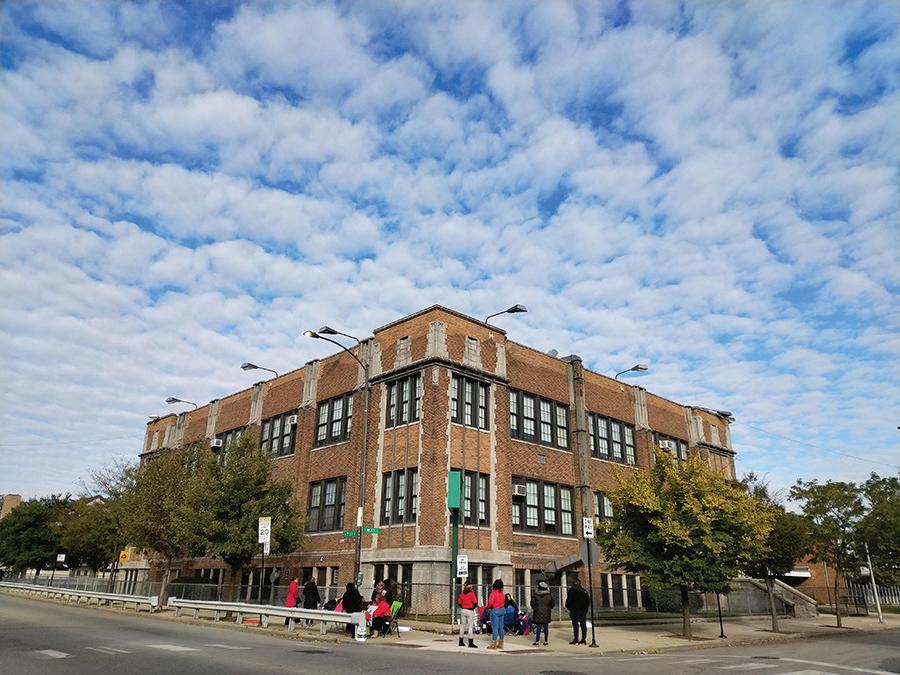
Indivisible IL9 Roundtable: Creating a2020 Scorecard
October 24 | 12pm – 1pm
Democratic Party Office 5539 N. Broadway Ave.
Black Lives Matter
Free Gerald Reed!
October 25 | 9:30am – 10:30 am 26th and California Cook County Circuit Court 2650 S. California Ave
Schools Say Enough
Sidewalk ChallengeSchools Say EnoughTransfer
October 25 | 11am – 3pm
Lincoln Park Presbyterian Church 600 W Fullerton Pkwy
Beverly Arts CenterDismantling Hate:
Peace Forum with Marie Newman and Robert Emmons, Jr.
October 26 | 1:30pm – 3:30pm
Beverly Arts Center 2407 W 111th St.
Museum of Contemporary ArtsTalk: Surveillance and Black Activism
October 26 | 3pm – 4:15pm Edlis Neeson Theater 220 E. Chicago Ave.
Jewish Council on Urban Affairs Tree of Life Commemoration Vigil
October 27 | 4:30pm – 6pm
Buckingham Fountain 500 S. Columbus Dr.
The People’s Lobby Being Asian in America:Drinks & Discourse
October 28 | 5:30pm – 7pm
Bernice’s Tavern 3238 S. Halsted St.
Indivisible ChicagoTrump, Get Out of Our House! Protest
October 28 | 8am – 8pm
Location pending Visit secure.everyaction.com for event details
Illinois Environmental Council

2019 Lobby Day:Support the Clean Energy Jobs Act October 29 | All Day Illinois State Capital 310 S. 2nd St. Springfield, IL
Warehouse Workers for Justice Will County Meet Up:Lobby Day Clean EnergyJobs Act
October 29 | 7am-3pm 1 Doris Ave Joliet, IL 60433
Planned Parenthood 2019 Future of Choice Trivia Night
October 29 | 6pm-8pm
Revolution Brewing -BrewPub 2323 N. Milwaukee Ave
Mom’s Demand Action-IL Lincoln Square October Meeting: Violence is a Women’s Issue
October 29 | 7pm - 8:30pm
Conrad Sulzer Library 4455 N. Lincoln Ave.
Center on Halsted Youth Program AlumniQueer Youth Halloween Party
October 31 | 4:30pm – 7:30pm
Center on Halsted 3656 N. Halsted St.
Chicago United for Equity Lincoln Yards Racial Equity Town Hall
November 2 | 11am – 2pm
Linda & Bill Gatz Boys & Girls Club at Lathrop Homes 2915 N. Leavitt St.
Indivisible Evanston Canvassing: FlipWisconsin 2020 with Indivisible Evanston
November 2 | 8am – 2pm Democratic Party of Evanston 747 Custer Ave. Evanston, IL 60202

Indivisible Lincoln Square ILS 2020 Election Committee Meeting
November 5 | 7pm – 8:30pm Conrad Sulzer Library 4455 North Lincoln Ave.
Reproductive Health ActCoalition
Reproductive Health ActCelebration
November 6 | 6pm – 8pm Savemore Lounge 4060 N. Lincoln Ave.
YWCA Lake County Community Organizing 101


November 6 | 6pm – 8pm Waukegan Public Library 128 N. County St Waukegan, IL 60085
Chicago Foundation for Women
Supermajority: Al-JenPoo, Alicia Garza, & Cecile Richards
November 8 | 7:30pm – 8:50pm Harold Washington Cultural Center 4701 S. King Drive
NEWS & POLITICS
continued from 8
picketers did share a desire to see improved proposals from the city, especially if the teachers have to settle for a five-year contract that may not keep up with the pace of inflation and rising rents and insurance premiums. “We’re not getting paid enough at all, we’re struggling,” said a 29-year-old special ed classroom assistant who asked us not to print her name. She makes $40,000 in her job at Bond and works from 9 AM to 4:30 PM. After that she attends classes in pursuit of a master’s degree in education until 8:30 PM. From 9 PM to 2 AM she works a second job and sleeps between 2:30 and 5 AM. As a single mother of five kids between the ages of two and 14, with a $1,500 monthly rent payment, she can’t spare much more time than that.
The teaching assistant said she was disappointed in Lightfoot’s attitude toward the teachers’ demands after watching last night’s newscast. “You want us to stay in Chicago, we need to be able to survive. If I had this wage increase I don’t need my night job, I’ll be at home more, I’ll be able to focus more in school. But she don’t understand that,” she said. “I regret voting her in.”
She added that she herself knows that things could be better. As a graduate of Marquette Elementary in Chicago Lawn, she’s
seen what more sta ng and resources can do for students, and she wishes her kids at Bond could have the same. “We have a lot of homeless students, we bring food for our students, we shelter them, we bring them clothes,” she said. “We’re their parents 7.5 hours of the day. They depend on us, we support them, we encourage them, we go above and beyond.”
As the Bond teachers continued to march up and down 71st, chant, and solicit horn honks from passing cars to the sounds of a Bob Marley song blasting from a portable speaker, a few students arrived to picket alongside or just to say hello and give hugs. A 14-year-old boy in a white hoodie named Gabriel, who graduated from eighth grade at Bond last year, stopped by to greet the special ed teaching assistant and get a handful of change to help him out for the day. He told the Reader he’s for the strike. He’d been new to Bond, but quickly formed relationships and found support there.
“I was here for a year, and it was a great experience,” he said. “I felt the love. They welcome you a lot.” Asked if he knew what the strike was about he said his teachers “probably want the money to deal with the problems at school every day. To help the school . . . But some people don’t agree with that, you feel me?” v
@mdoukmas
10 CHICAGO READER - OCTOBER 24, 2019 ll
Bond Elementary School in Englewood is struggling with a staff shortage and overcrowded classrooms. MAYA DUKMASOVA FOR CHICAGO READER
For more information of listed events please visit persistlist.org
sponsored byMOBILIZE
The Chicago Reader is community-centered and community-supported.





CHICAGO FOR CHICAGOANS
You are at the heart of this newspaper. Founded in 1971, we have always been free, and have always centered Chicago. Help us to continue to curate coverage of the diverse and creative communities of this fabulous city.




Your donation keeps the presses rolling. CHIP IN HERE: www.chicagoreader.com/members

OCTOBER 24, 2019 - CHICAGO READER 11
WANT TO DONATE VIA CHECK? Make checks payable to “Chicago Reader” and mail to Chicago Reader, Suite 102, 2930 S. Michigan Avenue, Chicago, IL 60616. Include your mailing address, phone, and email—and please indicate if you are okay with us thanking you by name in the paper.
ARTS & CULTURE
SMALL SCREEN
Still ghoulin’ after all these years
A sven-tillating conversation with Chicago’s legendary horror host, Rich Koz, on 40 years of Svengoolie, celebrity fans, and BERWYN!
By SALEM COLLO-JULIN
Local television legend Rich Koz doesn’t need an introduction to most of our readers, especially when he is dressed as his character Svengoolie, wearing his classic raccoon-eyed ghoulish face paint and top hat. But many might not realize that he’s been working in Chicago broadcasting since the 70s. Koz is the a able and spooky host of Svengoolie, the long-running Chicago television program that airs classic horror, sci-fi, and B movies intersected with comedy and trivia by Svengoolie, his friends, and an arsenal of rubber chickens. Svengoolie the show is the antithesis of slick, with its parody songs, low-budget set, and audio cues culled from 30s movies, but it’s also an incredibly important (and hilarious) link to 50s and 60s television. Koz created his own version of the character with the input and blessing of Jerry Bishop, a radio and television announcer who originated Svengoolie while hosting WFLD’s Screaming Yellow Theater program in the early 70s.
In 2011, Koz and the Svengoolie crew started making their mark on the national stage when locally owned network MeTV (current home of Svengoolie) started airing the show on its national cable broadcasts. The national version is pretty much the same as the old show, with the same lineup of spooky but not really gory horror fare, like Creature From the Black Lagoon and the 1931 Frankenstein. You can check it out almost every Saturday on MeTV, but I also recommend finding and watching the Son of Svengoolie show that aired on WFLD in the days before the Fox network. A great highlight from those years: “Blob of Red,” a parody song to the tune of the Beach Boys’ “Barbara Ann,” created for an 80s airing of the 1972 in-
The Blob
The Museum of Broadcast Communications is celebrating Koz’s 40 years playing Svengoolie with a new exhibition that will feature the Son of Svengoolie co n and other items from the original set. The exhibition kicks o with a gala at the museum on Saturday, October 26, at 7 PM. Tickets are $50 and include a meet and greet with Koz; proceeds benefit the museum. We e-mailed some questions to Koz and, amazingly, he was able to get out of the co n during this busy Halloween season and answer a few for us.
You recently were honored by 15th Ward alderman Raymond Lopez and the Chicago City Council for your 40 years of Svengoolie. What were the early days of the show like? Was it a smooth transition taking over from Jerry Bishop, or did you have to build an audience? Well actually, it wasn’t immediately going from Jerry to me! There was a little over six years in between his show and my show. To trace the Svengoolie history, Jerry was the staff announcer on duty (live) on Friday nights in late 1970, back when all TV stations had live announcers on duty. I had just graduated from high school earlier that year, and tuned in for the movies at first. He started doing funny rejoinders to the movie, and it evolved into his character, and went from voice-overs to actual video eventually. I was a fan of his radio and TV work, and sent him
some jokes and material, strictly as a fan. He liked what I sent him, found out I was a broadcasting student, and invited me to a taping.
I ended up working with him, and a er the show was canceled, worked with him in radio. A friend then asked him about doing Svengoolie as a sort of summer fill-in show on a TV station. Jerry didn’t want to play the character again, but he decided I could be “Son of Svengoolie.” It was pretty flattering that he felt I could be the character! We had some
THE MUSEUM OF BROADCAST COMMUNICATIONS CELEBRATES 40 YEARS OF RICH KOZ AS SVENGOOLIE Sat 10/26, 7-11 PM, Museum of Broadcast Communications, 360 N. State, 312 245 8200, museum. tv, $ 50. Doors open at 6: 30 PM.

“Berrr-wynners will attend a private reception with Rich Koz before the event from 5: 30 -7 PM for $150, which includes admission to the event as well as a personalized photograph with each guest and Sven.”
Svengoolie airs locally on MeTV Saturdays at 7 PM and on the U Saturdays at 11 AM.
false starts on the idea, and it didn’t end up happening. We went on to various things, together and separately, but then Jerry was hired to do a morning show in San Diego, and he asked what I was going to do. I told him I
might try to pitch a local station on a TV show. He then said if I wanted to try to do the Son of Svengoolie, I had his blessing. I shopped it around, and eventually got on the air—ironically on the same station Jerry had been on. I did have to kind of rebuild the audience, since time had passed and, of course, here was a different guy playing a variation on the original character . . . but we succeeded!
As a lifelong Chicagoan, tell us about some of your local broadcasting favorites from growing up. Radiowise, it was the guys on WCFL: Jerry, Jim Runyon, Ron Britain, and, of course, the great Dick “Chicken Man” Orkin, who I actually got to work with in my pre-Sven days—guys who were being creative. TVwise, it started with Two-Ton Baker, the Lunchtime Little Theatre folks (am I showing my age yet?!), and then all the WGN talent: the Bozo cast, Ray Rayner on various shows, Frazier Thomas, and then, on WFLD, the wonderful Bill Jackson, and, again, Jerry.
Many fans know you for the Sven character, but I have fond memories of The Koz Zone [a program Koz hosted and acted in on WFLD from 1989-1993]. What was the genesis of having your own “out of character” evening show? It all started when, on what would have been the tenth anniversary of the Son of Svengoolie show, Rob Feder wrote an article saying it was a shame that the show wasn’t still around, and the folks at WFLD (then having
12 CHICAGO READER - OCTOBER 24, 2019 ll
dependently produced British stinker Beware!
Svengoolie spooking.
COURTESY METV
become Fox 32) must’ve been worried that it made them look bad. So they called me in and said they wanted me to host movies again. Their semilame idea was “the Fox Phantom” who lived in the station basement and showed movies. I told them that was an idea that one of the country cable stations was already doing, and that I had my own idea.
Somewhat recently, then, there was the famous incident of a pirate broadcaster breaking into the Channel 11 and WGN airwaves, with a guy in a Max Headroom mask. I proposed that we do a takeoff on that: that I was a former disgruntled employee (ahem) who breaks into the airwaves every week and shows a movie. They bought it, and we even did promos. The promo started as a normal spot, then there was static, and you’d see me working on some equipment, with a sign reading “Friday 10:30” in the background. It’d then fade back for the end of the normal promo. A lot of people thought it was real. I was told the FCC actually called the chief engineer and asked if they should investigate. They were supposedly not pleased when he told them it was just a promotional gimmick.
We had great fun doing that show. The only reason it ended was that the Fox Network was starting its own kids’ block, and demanded that there be local hosts in every market. They assigned it to me, and the daytime Koz Zone was born. I always remember them being confused that they suddenly had a lot of adults watching the kids block—it was obviously my fans tuning in for the stuff I was doing!
Back to Sven—one of my favorite moments from the Son of Svengoolie era was when Jon Pertwee [the third Doctor Who] came on to promote a Doctor Who convention in town. Can you tell us anything about how that came to pass? My director at the time, Joe Oher, and I were both fans of the Doctor Who shows, which were then on every Sunday night on WTTW. When we found out that Jon was going to be in town for the convention, we reached out and happily snagged him for a guest spot. He had the idea of coming out of my coffin, as if it was the TARDIS. So I’m standing downstage and he throws open the coffin door, proclaiming “I am the Doctor!” Unfortunately, the coffi n lid hit a huge (and heavy) pillar on the set, which came crashing down, just missing us! Without missing a beat, Jon commented, “That must be the Master’s work!” He was a very nice guy and a lot of fun.
ARTS & CULTURE

You have a reputation for being supremely gracious with your fans at conventions and appearances. Do you have any favorite memories of people you’ve been able to meet throughout your career? One of the truly amazing things is the number of people I’ve met who have Svengoolie tattoos on various parts of their anatomy! A lot of the artwork is quite good, and it is very flattering, but it still boggles my mind. I mean, people in my own family would never get a tattoo of me! Also, people come up to me and thank me for doing what I do . . . It means a lot to them, and so that means a lot to me, especially the ones who tell me that I helped them get through some dark days in their lives.
The other great memories are meeting celebrities who are fans—recently, at the New York Comic Con, the great makeup and special effects master Rick Baker specifically sought me out to meet me. Robert Englund, Freddy Krueger himself, was a fan. The publisher of DC Comics, Dan DiDio, actually stood in line to meet me—that’s what eventually led to the current “Svengoolie Meets the DC Universe” chapters, starting in all the DC books starting October 30, running for four weeks. It’s amazing when people whose work I admire actually like what I do. Though we have yet to meet in person, Mark Hamill contacted me to say he’s a fan, and we’ve had everyone from Bill Hader and Jamie Farr to Gilbert Gottfried and Jerry “the King” Lawler as fans—heck, even Elvira likes me! She really likes me!
Why Berwyn? OK. When Jerry G. Bishop was starting his Sven show, Johnny Carson and Rowan and Martin made small-town jokes about Burbank. And back when he was working in Cleveland, famous horror host Ghoulardi (Ernie Anderson) made fun of a local suburb, Parma. Jerry wanted a local equivalent to poke fun at and settled on Berwyn, since, at the time, the main drags there were loaded with car lots and savings and loan companies. He decided Berwyn would be it, and I’ve carried on the tradition. The great thing is—the people of Berwyn KNOW that I’m only kidding, and they love it and have always been just great to me (with the exception of one short-term mayor who didn’t like the jokes but still would come over to get his picture taken with me when I appeared there!). And now, the whole country responds to the cry of: “BERWYN?!” v
@hollo
OCTOBER 24, 2019 - CHICAGO READER 13
DANCE PREVIEW
Feminist theory from Marginalia to center
Khecari pulls women’s movements— ferocious and intimate—into the spotlight.
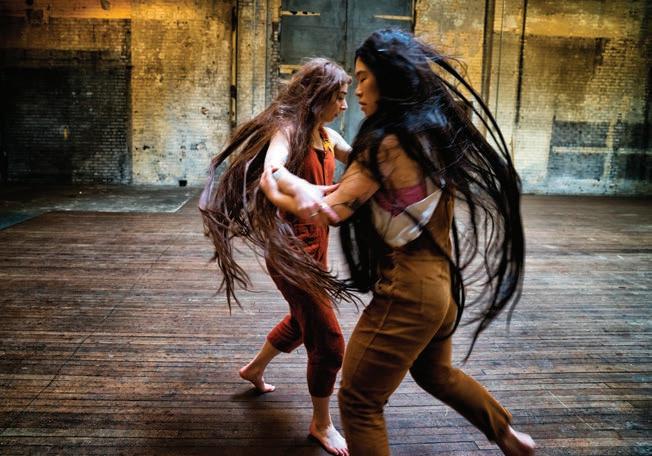 By IRENE HSIAO
By IRENE HSIAO
Two women begin with motion that is rapid and unrelenting, fearlessly yielding to momentum, whirring limbs about the axis of the spine, then creating new axes and leveraging shared weight to tumble together through space. Their endurance is remarkable. You can hear the sound of impact—flesh to flesh or floor. Though alike in stature and both bold, they are impossible to mistake for one other—each has her own center of gravity and her own texture in space, like neighboring atoms on the periodic table. Kara Brody and Amanda Maraist are the petite but feisty duo of Khecari’s Marginalia , created over a two-and-a-half-year process by Julia Rae Antonick and Jonathan Meyer. In this 65-minute duet, they tussle and toss their (sometimes artificial) hair, swirl, fall, and sweep through
space. Maraist places her fingers lightly on Brody’s throat; Brody drags the palm of her hand around Maraist’s neck—the gestures are gentle, yet alarming and incredibly exposed.


“ Marginalia is a piece for two women,” says Antonick. “We were thinking about marginalized movements for women. We wanted to explore a ferocious, rambunctious way of being, as well as the complete opposite: a tenderness that doesn’t have to do with sexuality but rather with intimacy. I wanted to make a piece that was just about two women getting
along, completely, the whole time, and not a man existing onstage at all.”
“We were also thinking about what marginalia is: the space for the reader to have their own response—a scrawling in the margins,” adds Meyer. “In general we want people to watch our work this way, to have the freedom to scrawl in the margins of what is being seen,” says Antonick.

Brody and Maraist talk like they dance— interjecting or repeating while the other is speaking. The e ect seems more the collective shaping of an idea than interruption or competition. About their relationship in Marginalia, Maraist says, “It’s complicated. It definitely feels like work, like any relationship worth having feels like work. Knowing we’re in a relationship, even when we’re not looking at each other—that’s half of it. I just need to reach behind me and know she is there—” “for support,” says Brody. “For support or—” (Maraist) “safety or—” (Brody) “I think it’s all the same idea” (Maraist). “I think it’s authentic” (Brody). “The tenderness wouldn’t feel as tender if there weren’t this 26-minute—” “crazy—” “swath in the beginning—” “sure—” “craziness, yeah.”
Maraist and Brody’s improvisation practice in Marginalia rehearsals eventually prompted them to develop a duet of their own devising, Burrow, Tousle, first presented last year. Whether or not one work is marginalia to the other, the collaborative creativity of these women is front and center. v
@IreneCHsiao
DANCE REVIEW
Love reigns supreme in the Joffrey’s remount of Jane Eyre, but the feminism sometimes falters

Cathy Marston’s vision includes brilliant duets, but doesn’t solve the problem of Bertha.
 By LAURA MOLZAHN
By LAURA MOLZAHN
Among the great pleasures of 19th-century novels are their length, their breadth, the deep dives into characters’ lives and into the social fabric of the time. It’s almost suicidal to try to stage these stories in just over two hours. Yet that’s what British choreographer Cathy Marston did with Charlotte Brontë’s 1847 Jane Eyre, in a 2016 evening-length ballet now remounted by the Jo rey at the Auditorium Theatre. It’s an act of love, and of daring—for good and bad, a contemporary feminist take on the story.
Eliminating all traces of costume drama, Marston emphasizes the novel’s bleak universality. Patrick Kinmonth’s painted drops show sloping, intersecting lines suggesting lonely hills, the moors, a distant horizon on a vast open plain. His pared costumes merely hint at the period. Philip Feeney’s score likewise defers to the choreography, as Marston steps outside the bounds of classical ballet to highlight the characters’ distinctive gestures.
The story is anchored, of course, in the orphaned, abused Jane Eyre and her relationship with Mr. Rochester, the dictatorial gentleman who hires her as governess to


14 CHICAGO READER - OCTOBER 24, 2019 ll ARTS & CULTURE
From le : Amanda Maraist and Kara Brody CHIEN-AN YUAN
MARGINALIA Thu 10/24 -Sat 10/26, 7
PM, Links Hall at Constellation,
3111 N.
Western,
773 281 0824,
linkshall.org,
$25 -$100
PICTURED:
CHER ÁLVAREZ.
PHOTO BY MICHAEL BROSILOW.
NOW PLAYING WRITERSTHEATRE.ORG I 847-242-6000 EVERY RELATIONSHIP HAS ITS SECRETS.
ARTS & CULTURE
his ward, Adele. Marston’s task is to translate the book into dance, which she does with particular brilliance in the love duets, the ballet’s beating heart and sturdy skeleton, its viscera. And in her clever formulation, evolved dancing corresponds to an evolved person. When she shows us Jane as a child, tortured by her aunt and cousins, she’s just a rough, violent girl who can only fling herself in fury. Roch-

ester’s housekeeper, Mrs. Fairfax, seeking to refine both Jane and Adele, teaches them to dance, to move, almost immediately after Jane arrives.
Emotionally, Jane is already evolved enough to interact with Rochester on equal terms. In their first duet, they’re clearly dancing one of the novel’s bantering, witty, occasionally combative early conversations. Every subsequent

duet fully limns a new phase. When Jane saves Rochester’s life, pulling him from his burning bed, and they dance in their nightclothes, there’s a huge jump in intimacy: intellectual attraction has become fiery desire. The highly athletic, technically di cult proposal scene, near the top of the second act, feels artificial, forced—maybe because Rochester already has a wife: Bertha, the mad Creole in the attic. When Jane, about to be married, finds out about Bertha and tosses her bridal veil aside like the rag it is, their duet is marked by distance and avoidance.
Though the early duets in the second act falter, and the story of Jane’s would-be husband, St. John Rivers, feels cursory, dutiful, Marston returns to form in the final duet, when Rochester’s blindness completely changes the power dynamic between him and Jane. Just before the quiet end, Marston inflects Jane’s usual isolating, self-protective gesture—clasping her own chest or head—to suggest the mutual support between these two. When she stands with her back to Rochester, touching once again her hands to her face, he takes one of them in his and places her other behind his neck, forming a loop, a never-ending circuit of love.
While Marston pretty much nails the love story, her sometimes heavy-handed treatment of the novel’s feminism, embodied in the literal manhandling of Jane by the ten characters she calls the D-Men, comes perilously close to tiresome, their scenes continually hammering
home Jane’s victimization. Predictably, she’s a rag doll in their hands at first but increasingly defies them, finally trouncing them all—one by one, action-heroine style—in an unsurprising final confrontation.
A bigger problem, especially since Marston emphasizes Brontë’s feminism, is her treatment of Bertha, who has her own story of abuse by men, a story Jean Rhys tells in her 1966 novel, Wide Sargasso Sea. Rhys not only imagines Rochester’s cruelty to Bertha—a cruelty visible but unacknowledged onstage here—but exposes its source in imperialist, racist beliefs. A baked-in problem, Bertha (Christine Rocas, excellent on opening night) is simply a monster here, as usual. If you’re going to be a feminist, care for all women.
Marston’s feminism feels most genuine when she celebrates female friendship in duets and trios that comfort Jane, give her a community. On opening night, Lucia Connolly danced the dithery, skittery Mrs. Fairfax to perfection, as Cara Marie Gary did the hyperkinetic Adele. As Young Jane, Yumi Kanazawa was touchingly vulnerable and defiantly strong. Greig Matthews made a great moody Rochester, but his partnering of Amanda Assucena’s Jane made me fear for her safety. She brought precise technique and fearless flamboyance to bear on a Jane powerful in every scene, whether standing silently watching or dancing her heart out.
OCTOBER 24, 2019 - CHICAGO READER 15
RJANE EYRE Through 10/27: Thu-Fri 7: 30 PM, Sat 2 and 7: 30 PM, Sun 2 PM, Auditorium Theatre, 50 E. Ida B. Wells, 312 386 8905, joffrey.org $ 35 -$199
v
@LauraMolzahn
Jane Eyre CHERYL MANN
Kartemquin Films honors Diverse Voices
The organization nurtures rising Chicago documentarians through its grant program.
By JANAYA GREENE
Los Angeles and New York might still be the film industry’s biggest hubs, but Kartemquin Films is a reminder that, with support, filmmakers can thrive in Chicago too.
Ahead of their Empowering Truth benefit luncheon, Kartemquin Films announced the 12 recipients of their 2019 Diverse Voices Accelerator Fund and Emerging Storyteller Fund grants. Grantees are emerging documentary filmmaker who have participated in one of Kartemquin’s filmmaker development programs, such as Diverse Voices in Docs, or are engaged in coproductions with the company that tell stories not often covered in popular media; the DVID fellowship is intended for documentarians of color. Themes among the selected films include subjects such as gender equity in brewing and the impacts of immigration and displacement.
In June, Latesha Dickerson stepped away from her 22-year teaching career to delve into documentary filmmaking full-time, a feat she says was mostly made possible by her involvement with Kartemquin as a DVID fellow in 2017.

Through the fellowship Dickerson learned about pitching films to funders, the process of film distribution, and other topics. Now, she’s combined her filmmaking skills with her passion for education in her documentary, Teaching While Black , which explores how Chicago-area schools may be pushing Black teachers away from the profession.
“There was a high school I was in on the


north side, there were less than five—probably less than three [Black teachers],” she said. “I saw a lot of peer professionals that were Black, security sta , cafeteria food service workers, but not a lot of ‘This is the science teacher in the classroom and she is Black.’”
Martine Granby is another 2019 grantee, which follows her 2015 DVID fellowship. For her new film The Mask That Grins and Lies , she began by centering mental health in Black communities, but the project soon turned into an introspective look into her own family’s struggles with mental health.
“The process became [my family] pinpointing points in our past where it became so clear that we needed to talk about x, y, and z and we didn’t. The film really talks about the why and how we moved forward,” Granby said.
Though Granby moved back to her home state of New York in 2017, she still calls Chicago home, and Kartemquin her film family. She’ll be attending the October 29 luncheon, which will feature a one-minute preview of The Mask That Grins and Lies along with select other films.



“So many people need to see this [film], and you don’t really know if anyone outside that community would care or want to see it,” Granby says. “For Kartemquin to give this funding and acknowledge the film, it really means a lot. This goes beyond me, myself, my family and my community.” v
@janayagr
NOW PLAYING Boogie Nights
Writer-director Paul Thomas Anderson’s second feature (1997) is a two-and-a-half-hour epic about one corner of the LA porn industry during the 70s and 80s—a seemingly limited subject that becomes the basis for a suggestive and highly energetic fresco. The sweeping first hour positively swaggers, as a busboy (Mark Wahlberg) is plucked from obscurity by a patriarchal pornmeister (Burt Reynolds at his near best) to become a sex star. Alas, this being the American cinema, tons of gratuitous retribution eventually come crashing down on practically everybody in mechanical crosscutting patterns, and because Anderson has bitten off more than he can possibly chew, a lot of his minor characters are never developed properly. Moreover, just as his first feature, Hard Eight at times slavishly depended on Jean-Pierre Melville’s Bob le Flambeur, Anderson here attempts to “outdo” Tarantino (in a fabulous late sequence with Alfred Molina) and to plagiarize a sequence from Raging Bull that itself quotes from On the Waterfront, rather than come up with something original. But notwithstanding its occasional grotesque nods to postmodernist convention, this is highly entertaining Hollywood filmmaking, full of spark and vigor. —JONATHAN ROSENBAUM R, 152 min. 35 mm. Thu 10/31, 7 PM. Univ. of Chicago Doc Films

R Film About a Woman Who
Yvonne Rainer wears a lot of creative hats. As a dancer, choreographer, author, and filmmaker, Rainer has honed in on experimental and unabashedly confessional themes across all bodies of her work. Her 1971 sophomore feature, Film About a Woman Who . . . doubles down on those themes to get inside the mind of a wayward woman as she processes being cheated on. Film About a Woman Who . . . is far from conventional in its storytelling, utilizing he y monologues, text, and lyrical dance in ways that play more like theater or performance art than a narrative film. But it isn’t without conventions either—in fact, Rainer adeptly references heavily gendered cliches of melodrama and soap operas to examine a woman’s honest rage, sex, nostalgia, and the artifice of keeping it all together. —CODY CORRALL 105 min. Critic and artist Fred Camper lectures at the screening. Tue 10/29, 6 PM. Gene Siskel Film Center
R Five (For Ozu)
Abbas Kiarostami’s 2003 collection of nonnarrative sequences pales in comparison to his subsequent experimental feature 24 Frames (2017), but it’s clearly the work of a master, a hypnotic contemplation of animals, weather, and time’s passing. The movie appears to be a series of unmediated takes, but this is illusory; in fact Kiarostami directed the onscreen action as intensively as he did that of any of his narrative works. A scene in the making-of documentary Around Five shows the filmmaker carefully herding ducks for the majestic (and subtly funny) fourth sequence, in which a seemingly endless train of animals passes before the camera as if on parade. Likewise the haunting final sequence, which meditates on moonlight and rain hitting a
16 CHICAGO READER - OCTOBER 24, 2019 ll FILM
The fi rst photo professionally taken of six-month-old Martine and her mother, Felita Granby in Texas. Still from The Mask that Grins and Lies COURTESY MARTINE GRANBY
STORYTELLING
2019 EMPOWERING TRUTH BENEFIT LUNCHEON Tue 10/29, noon, the Standard Club, 320 S. Plymouth, ktqbenefit.com, $250.
. . .
FILM
pond at night, is a composite of multiple shots, the director having selected the most dynamic moments to convey a world in constant flux. The film’s soundtrack is characteristically rich throughout, making this a veritable feast for the senses. —BEN SACHS 78 min. Sat 10/26, 5:15 PM. Gene Siskel Film Center
The Golden Glove

With this grungy saga about a serial killer in 1970s Hamburg, director Fatih Akin (The Edge of Heaven) seems to have set out to make the most repulsive movie he could. It opens with an extended sequence of the antihero—a loutish alcoholic with greasy hair, bad teeth, and a permanently broken nose—dismembering one of his victims, and it only gets uglier from there. In Tarantinoesque fashion, Akin peppers the drama with ironically employed vintage so rock, as if that would make the content more palatable, yet the bad taste behind the musical choices is just as cringeworthy as the imagery. I’ll credit the director with creating a memorably palpable vision of society in decay, and the cast exhibits an unflinching commitment to his vision. Still, the overall hideousness makes this virtually unwatchable; I’d be happier if I’d never laid eyes on it. In German with subtitles. —BEN SACHS 111 min. Fri 10/25, 8:30 PM; Sat 10/26, 7:45 PM; Sun 10/27, 3 PM; Mon 10/28, 8:15 PM; and Wed 10/30, 8:15 PM. Gene Siskel Film Center
Good Kisser
Wendy Jo Carlton directs this 2019 U.S. indie film about two women in a stagnating romance who decide to spice things up by engaging in a seemingly lighthearted threesome. Beginning and ending in a ride share with a preternaturally patient driver, the film takes place over the course of one interminable Seattle night in which it becomes increasingly clear that each of the three women is keeping a secret. Extended scenes of languid, boozy flirtation are interspersed with tense, jittery conversation, making for a stilted viewing experience not unlike a David Mamet play. Carlton’s characters speak in sentences that are self-conscious and overly aware, rendering them a little unlikable but instantly identifiable as representations of the awkward, cowardly parts of our own selves when faced with a crumbling relationship.
At times giggly, at times cringey, this film initially seems like a rom-com but quickly turns into the anxious, tightly wound reflection on sexuality and self it clearly was meant to be. —NINA LI COOMES 75 min. Carlton attends the 8:30 PM Friday, Saturday, and Sunday screenings. Fri 10/25, 2 and 8:30 PM; Sat 10/26, 5:15 PM; Sun 10/27, 5 PM; Mon 10/28, 8:15 PM; Tue 10/29, 6 PM; Wed 10/30, 8:15 PM; and Thu 10/31, 6 PM. Gene Siskel Film Center
R Halloween
John Carpenter’s 1978 tour de force, perhaps the most widely imitated film of the 70s. As a homicidal maniac stalks the small town of Haddonfield, Illinois, Carpenter displays an almost perfect understanding of the mechanics of classical suspense; his style draws equally (and intelligently) from both Howard Hawks and Alfred Hitchcock. Though the film seems conscious of no significance beyond its own stylistic dexterity, its buried themes of sexual transgression and punishment appear to have touched something deep in the soul of the American teenager. The film, in its duplicitous way, makes a powerful plea for the comfort and security of puritanism. With Jamie Lee Curtis, Donald Pleasence, and P.J. Soles. —DAVE KEHR R, 93 min. At Music Box Theatre: Sun 10/27, 7 PM; at Logan Theatre: Tue 10/29-Thu 10/31, 9 PM. Logan, Marcus Addison Cinema, Marcus Gurnee Mills Cinema, Marcus Orland Park Cinemas, Music Box, Pickwick
R I Walked With a Zombie
This elegant little 1943 film by Jacques Tourneur, a tale of voodoo and devil worship in the West Indies, is one of the most poetic works to emerge from the Val Lewton unit at RKO in the 40s; it transcends the conventions of the horror genre and remains one of Lewton-Tourneur’s most compelling studies in light and darkness. Not to be missed. With Frances Dee, Tom Conway, and Edith Barrett. —DON DRUKER 69 min. 35-mm archival print. Thu 10/31, 7 PM. Northwestern University Block Museum of Art F
R The Lighthouse
Legend has it that it’s bad luck to kill a seabird, as they are thought to carry the souls of dead sailors.
Robert Eggers’s second feature, The Lighthouse uses this and other bits of maritime lore as inspiration for an enchanting and grueling tale of men, companionship, and the mighty sea. An old lighthouse keeper (Willem Dafoe) and his new apprentice (Robert Pattinson) work a daily routine off a New England shore—that is, until secrets, isolation, and mythical visions begin to fester, eventually leaving their minds undone. Dafoe and Pattinson each give the performance of a lifetime, singing sea shanties piss-drunk until their lungs give out and making mumbles feel like Shakespeare, all while covered in shit, mud, and anything vile you can conjure. The visceral, disgusting, and irrefutably maddening theatrics of The Lighthouse are entrancing enough to have viewers happily giving themselves over to a beckoning siren by film’s end. —CODY CORRALL R, 108 min. Century 12 and CineArts 6, Music Box, Regal Cantera Stadium 17 & RPX, Webster Place 11
ALSO PLAYING
The Attractions of the Moving Image: A Celebration of Tom Gunning
This two-day event, marking the retirement of University of Chicago film professor Tom Gunning, includes presentations from a number of film scholars, a screening of Frank Borzage’s 1927 silent film 7th Heaven, an open

mike, and a shorts program featuring films by Ken Jacobs, Lewis Klahr, Ernie Gehr, Jodie Mack, and Marc Downie and Paul Kaiser, with all the filmmakers attending. Visit cms.uchicago.edu for a full schedule. Fri 10/25, 9 AM-9:30 PM; and Sat 10/26, 9:30 AM-6 PM. Logan Center for the Arts F
Horror Noire: A History of Black Horror
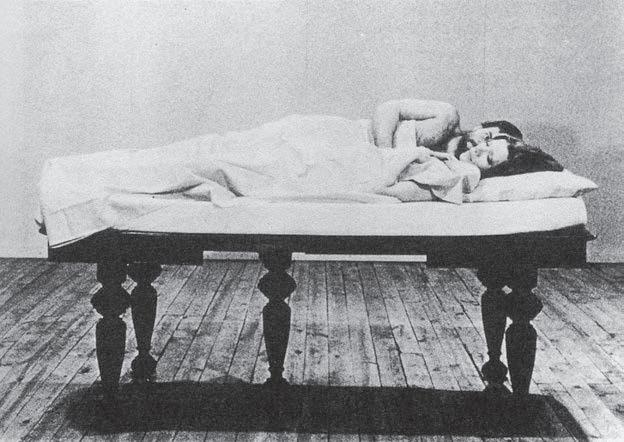
A documentary about the history of Black representation in horror cinema and horror films made by Black filmmakers, from the silent era to the present; based on the book by media scholar Robin R. Means Coleman. 83 min. Coleman attends the screening. Fri 10/25, 7 PM. Northwestern University Block Museum of Art F
Present.Perfect
SAIC grad Shengze Zhu directed this U.S./Hong Kong documentary about the Internet livestreaming phenomenon in China, with a focus on more marginal individuals than those who have become celebrities. In Mandarin with subtitles. 124 min. Zhu attends the screening. Thu 10/31, 6 PM. Gene Siskel Film Center
The Sideshow
Erle C. Kenton directed this 1928 silent circus drama, about rival troupes. With Marie Prevost, Ralph Graves, and “Little Billy” Rhodes. 67 min. 35 mm. Dennis Scott provides live accompaniment. Sat 10/26, 11 AM. Music Box v
OCTOBER 24, 2019 - CHICAGO READER 17
Film About a Woman Who. . .
Get showtimes and see reviews of everything playing this week at
chicagoreader.com/movies
R READER RECOMMENDED b ALL AGES N NEW F
ASYLUM CITY
The harrowing stories of six asylum seekers who now call Chicago home

Story by SARAH CONWAY, MICHELLE KANAAR, APOORVA MITTAL, AND KASH




Illustrations by DANBEE KIM/ OORI STUDIO
What exactly drives tens of thousands of asylum seekers to travel weeks, months, even years to come to the United States?
Those who make the perilous journey north are often at the mercy of coyotes, police, and thieves as they trek through unknown territory by bus and on foot. For many, however, what’s behind them is worse than the unknown that they face: to return home simply means not to survive.

More than 160,000 people applied for asylum in the United States last year, seeking shelter from persecution in their home country due to their race, religion, nationality, sexual orientation, or political opinion. That number has nearly quadrupled in the last decade. Often they are escaping torture, gang recruitment, killings, extortion, and widespread violence.
Once asylum seekers arrive in the United States, they may be sent to Mexico to await
90 Days, 90 Voices is now BORDERLESS MAGAZINE . Help us bring the voices of asylum seekers to the streets of Chicago. Put up the poster included in this issue, take a picture, and tag us on Instagram or Twitter
@borderless_mag for a chance to win Borderless swag. Read more at borderlessmag.org
18 CHICAGO READER - OCTOBER 24, 2019 ll
their immigration court date as part of the Trump Administration’s “Migrant Protection Protocols.” Or they may be put in a detention center within the United States, where they will wait with other immigrant and nonimmigrant prisoners for a judge to determine whether they can be released into the country to await their court date.
The United States has the largest immigrant detention system in the world. More than 50,000 immigrants are currently being held in detention centers, local jails, and prisons across the country. While Chicago’s sanctuary status bans detention centers within city limits, there are 96 Immigration and Customs Enforcement detention centers in Illinois, Indiana, Michigan, and Wisconsin.
In these cells, asylum seekers often wait weeks and even months to be released. Even then, however, safety is not guaranteed. While one in four asylum seekers were given sanctuary in the United States in 2010, today only one in 12 is afforded the same protections.
“Seeking asylum in the U.S. itself can be a trauma because of the systemic injustices clients experience in the immigration courts or asylum o ce,” says Hannah Cartwright, a supervising attorney who works with asylum seekers through the National Immigrant Justice Center’s Adult Detention Project. “[My] clients are often forced to reexperience traumas they su ered in their home country or during their migration journey.”
Borderless Magazine spent the last year listening to asylum seekers who lived in a shelter run by the Interfaith Community for Detained Immigrants in Cicero. The shelter recently closed, a testament to the ongoing challenges community groups face in trying to support this vulnerable population with limited resources.
In their own words, here are the stories of six individuals we spoke to about what it means to seek asylum in Chicago today.
Kash, Jamaica
Kash grew up in Kingston, Jamaica, in Seaview Gardens, an area known for crime and gang violence. Homosexual acts are outlawed in Jamaica, and as a boy and young man Kash faced constant threats for his sexual orientation. Despite this harassment, he started writing about gay rights in local newspapers and became a leader in his university’s Rotaract club, a group for young adults sponsored by Rotary International. Six years ago he was at-
tacked on the street by a crowd that beat him, threw stones at him, and ripped o his clothes. Even though there were witnesses, no one was ever charged for the attack.
I’M TRYING TO find a place to call home. My own country refuses me on the basis of my sexuality. I am an unnatural thing, they say. I am a gay man in Jamaica, where there is intense hatred and violence against actual or suspected gay men. I have suffered public ridicule and beatings in my daily life because of my sexual orientation.
Growing up, I was too young to understand why I was different, but knew that I was not as masculine as my older brothers and other boys my age. I had no friends as a boy since the other boys insulted me and didn’t want to be seen with me.








I truly tried to be the “straight” person that Jamaican society expects me to be, but I had no control over my personality and voice. I o en wondered if there was something wrong with me, and most of the time I would pray and ask the Lord to take away this desire I was having for the same sex. But those prayers seemed to go unanswered until this day. Once I even created a fake e-mail address and e-mailed my pastor at the time, asking him Why me?
I knew there would be consequences to face when I started writing those letters to the editor and getting involved with LGBTQ advocacy, but I had no other way to express myself. All I wanted was for people to understand that being gay isn’t a crime and that I am still a human despite my sexual orientation.
I still experience nightmares over what happened to me, with the sexual, physical, and emotional abuse and trauma that I have experienced. However, I wake up and am thankful for having found real safety in Chicago. It was my hope that after so much abuse and mistreatment as a homosexual, and the prospect of even more abuse and mistreatment if
I was sent back home, that I would be granted asylum in the United States. And finally, a er months of waiting, I was.
Victor, Nigeria
Victor was a professional rugby player who represented Nigeria in a Rugby World Cup qualifier game. In 2018, Victor was forced to flee for his safety. As a bisexual man in a country that outlawed same-sex sexual activity, he faced prison or even death for his orientation. In February that year, Victor arrived at Chicago O’Hare International Airport with his family, intent on seeking asylum. But he soon learned that his wife and daughter would be held in detention as his asylum case progressed. So his wife took their daughter back to Nigeria while Victor was sent to a detention center in southern Wisconsin.
the courage to say, Yes, I have a place here too.
I ended up staying close to four months in detention before I was released. It’s not been easy staying here in Chicago without family. I miss my little kid. I am trying to figure out how to get them here. I grew up without a father and I don’t want my little girl to go through the same process. Everyone says America is a haven and they see America as a paradise where everything works smoothly. But it’s a different story.


Gabriela*, El Salvador
When Gabriela moved into a new neighborhood in San Salvador, she became a target for both the local gangs and police. Fearing for her life and the safety of her three-year-old son, Kelvin, Gabriela fled to the United States to seek asylum. The journey to the border took 17 days, but what came next devastated her.
ON THE JOURNEY, the only thing that mattered to me was my son. The first part of the trip was by bus, but as we got closer to the border, we were moved into an open truck bed with 135 people. We only had a little bit of water. The top of the truck was open to the sun, rain, and wind. I remembered people fainting around us, and I just held my son in my arms because he was so weak he would only sleep. When he would wake up he would say he wanted food, but I didn’t have any to give to him. We couldn’t even get off the truck, because the driver didn’t want to stop.
THE FIRST TWO months at the Kenosha Detention Center felt like a nightmare. You are so enclosed you don’t have the opportunity to move around. That’s how you start going crazy. That’s how Kenosha was for me.
The detention center was a mix of immigrants and actual criminals. We were in the same detention as criminals who’ve committed murders, gang bang, and stuff. You don’t have time to rest. You don’t have the pleasure of going outside to play or having social time—none of that. At the detention center, you don’t really have privacy. They are making you understand that you’ve come into America and it’s not all rosy.
A er the first month or so, I forced myself to read books to pass the time. I read about the history of Native Americans. The Americans we see today are actually immigrants; the real Americans, which are the Native Americans, you barely see. So I felt empowered when I read books like that. It gave me
We reached the border in March 2018. But instead of feeling happy, I felt tormented. I didn’t know why.
We used a raft to cross the Rio Grande River at the border, but the raft had a leak. When we started to sink I grabbed my son. I was shaking because I hadn’t had anything to eat, but I put him up on my shoulder so he wouldn’t get wet and I grabbed a tree root to pull myself out of the river. Then I spent a half hour walking through rural Texas before Border Control showed up and took us away.
I didn’t know it then, but the worst part of this journey was still waiting for me. We were all wet, and once they got us I thought I would have clothes to change into because I was sick. They said they weren’t a hotel to give me clothes.
I was shaking because they put us in these freezing rooms where there was no room to even put your feet. First was the icehouse, hieleras (“freezers”), and then the dog- J
OCTOBER 24, 2019 - CHICAGO READER 19
house, or holding cell. That’s what we called it because we were on top of each other like they keep the dogs. I got to a point where I couldn’t carry my son in my arms anymore. The only spot he could lay on was under a trash can. I dumped out the trash and put him under it. It hurt my soul to do that, but I wanted him to be comfortable and my arms couldn’t hold him up anymore.
A erwards, I was called to have my picture taken with my son. When I was returning to the cage, I waved at one of the immigration officials so he would come over to me. I didn’t realize that you cannot look or speak to them. He got very close to me and said, “I am not a dog for you to speak to me that way. Because you talked to me that way, I won’t open the door for you. You’ll have to wait there.”
I was holding my son and shaking from exhaustion and fear, with tears rolling down my face.
On the third day, the immigration offi cials called me and told me, “Ma’am, you have a criminal file in your country.”

I said no, I’ve never been imprisoned in my life.
“Have you had trouble with the police?”
I said no.
“Yes, you have,” they told me. “You are a threat to your son. We are going to take your son.”

In that moment, I wanted the earth to swallow me. It was the worst moment of my life.
First they took my son’s birth certificate, and then they called us and brought us to a small cage. It was just me and my son and two immigration agents and a woman. My son had been vomiting and had diarrhea at that time, and I told them that, but they didn’t care. They told me to give my son to the woman. I begged them, I said no please, please don’t take him from me! Instead, just send us back. They told me at that point if I didn’t hand him over, they would take him by force. I held him tight and whispered, forgive me.

The woman grabbed my son and the first thing he did was say “Mama.” When I tried to hug him, they pulled me away. The official said that they would deport me to make sure I would never see him again if I didn’t let go. As I was led out, I heard him say “Mama” over and over but I had to turn my back.
Later, I could see that my son was sitting alone on a metal bench looking around for me. I asked the immigration official to please let me hug him one last time, and he said he couldn’t do that. Then I asked where they were taking me. “You’re going back to your country.”
When he told me that I cried even more because I thought, How can I leave my son here? I was put in a line of people, and I asked where we were going and they said, “We are being deported.” I looked all around and thought, If they take me to the airport and they want to put me on the plane I will throw myself on the ground and I will not go unless they give me my son.
I SPENT FOUR days in Laredo Processing Center, and I didn’t hear anything about my son. Then an official came. He said, “Listen, I’m not immigration, I’m not ICE, I’m not asylum. I want information about gangs in your country.”

I said, Why would you ask me that? Where is my son? He told me that my son would stay, but that I would be deported because I’m a threat to this country. “We don’t want you in this country. We want to take you out as soon as possible. What are you going to do in my country? Ruin it,” he said.
I told him, But how am I coming to ruin your country with my son in my arms? Is it ruining your country looking for work to get ahead in life or to protect my son? Is that ruining your country? He told me that I couldn’t stay in America and that the asylum officer wouldn’t give me asylum. They would do the interview as soon as possible to get me out of here and send me back to El Salvador.
The next day an asylum officer interviewed me and told me that my case was credible. I didn’t know what that meant. I got to the dormitory and many people asked me, What did they say? Aren’t you happy? At that moment, the only thing that would make me happy is if they had given me back my son. Nothing else mattered to me.
Two weeks passed and I hadn’t heard anything about my son. I was called to see a judge. An immigration official told me that I wouldn’t be getting bail because I was a big
gang member and that I wasn’t wanted here. It frightened me so much that I was afraid to speak to any of them and I didn’t have a lawyer. I was only connected to a lawyer through my son. They had visited him and got to know him, and then learned about my case.


Thank God I had these lawyers. My lawyers were able to contact a group of lawyers through the National Immigrant Justice Center that were experts. After a lot of investigation and compiling 353 pages of evidence, my case went to a federal judge who said that there was no argument against me. I was told that the judge asked why they had done that injustice to me and my son, a boy of that age, only three.
The judge ordered that immigration officials had to reunite me with my son. They said they would reunite me with my son at the Laredo airport because he was in Chicago and they were going to bring him from there. When that day arrived, they brought me to an immigration office. I was in one of those dog cages, handcuffed. I was wondering why I was handcuffed because I was supposed to be free.
The order said that my son had to be released to my arms, and yet the official goes and tries to pick up my son without me. They locked me up in an icebox while I waited. It was extremely cold, and I was shivering. I said that I was cold, and an immigration official came and gave me a piece of paper and said, “Cover yourself with that.” I really broke down at that moment.
One hour passed, then two, and my boy still didn’t show and neither did the official. I asked another immigration official and the official says, “They haven’t told you anything? The thing is, we aren’t going to reunite you with your son.”
The next day, they took me out of the detention center and said that I would be going to another detention center, and I immediately started to cry. Finally, I got on a bus with a woman and her little girl. The bus driver tells me, “We are going to a family detention center to drop her off, so maybe your son is waiting for you there.”
I could hardly bear it. I saw behind the bus that there was a car following us. I watched as we arrived at the detention center and the car kept following. I thought, my son must be in the car, and he was.

He looked very scared, and then he saw me and he said “Mama!” and he ran to me and I hugged him. That moment was the most emotional moment of my life. We had been separated for nine months.



But the truth is that the U.S. government gave me back a son that is completely different from the son I had. The first couple of days we were back together, anytime I would get close he cringed like he thought I was going to hit him. He goes to the bathroom on himself and his social worker and teacher say he acts at the same developmental level as a two-year-old even though he’s four. When they told me that, it was a huge shock. He wasn’t like that before, so why now?
They told me it’s going to be hard for him because he was very little for all the trauma he endured. In the end, I just have to be patient.
CH, Pakistan
When CH arrived at the U.S.-Mexico border in 2015, he had walked for 12 days straight surviving on just coconuts. His journey had begun an ocean away in Pakistan, where he had narrowly escaped with his life. The government had constructed a dam in CH’s village in 2013 and displaced many people from their homes. The villagers were promised compensation for their lost property, but the village leaders took the money. Cheated out of his ancestral land and denied the compensation that was promised to him, CH protested and gathered the support of others who had lost their homes. It was then that one of the village leaders decided to put an end to CH’s insubordination.
I DECIDED TO leave Pakistan in 2014 a er a leader in my village made a third attempt to murder me. I saw an advertisement for getting a visa from Brazil outside of a travel agent’s office in my village. Leaving seemed like the only option as the men continued to harass me and my family. Selling my flourishing car rental business, which I had built from the ground up, was not the hardest part. Leav-
20 CHICAGO READER - OCTOBER 24, 2019 ll
continued from 19
ing my elderly parents, wife, and three kids was.
In São Paulo, I worked at a chicken export factory. But things got worse. I couldn’t handle the degree of violence in the city. People were murdered in broad daylight, and it felt more dangerous than Pakistan. Seeing all this violence brought back memories of the time I was attacked in Pakistan and was le to bleed on the roadside. The local police refused to file a report of the attack, and the hospital denied me treatment without a police report. They were all under the village leader’s control.
I heard the system in the U.S. is just and that everyone gets a fair chance here. I decided to come here to live freely. I was picked up by Border Patrol at the U.S.-Mexico border in 2015. I was transferred between prisons in California and Louisiana, and I didn’t know how things would work out for me.
In California, they barely let us sleep and kept the air-conditioning on at extremely cold temperatures. Every hour an officer would wake us up and take attendance. It was torture.
In Louisiana, things were better. I started working in the kitchen at the detention center for four hours a day. I wasn’t working for money. A er cleaning the kitchen, I got to go outside to throw out the garbage. In those brief moments, I got a glimpse of the outside world. Trees, a police car—there was a reality beyond the four walls. This daily reminder kept me going. While I was there, I spoke on the phone with my ailing father in Pakistan and told him imaginary stories of my newfound freedom in the U.S. I was a safe and happy man here.
My first asylum case hearing was in August 2015. A lawyer agreed to represent me just days before my court date. But the time was too short for him to fully understand my case. On his request for more time, the judge gave me a court date for March 2019.
I was shocked. Almost four more years before I could earn my freedom. Four years of a life in limbo, without a work permit or much else to do. You see, asylum seekers can apply for a work permit if the court does not reach a decision on their case within 180 days. But when my lawyer asked for more time and my hearing was postponed, the clock stopped for me. I started crying out of frustration. The lawyer was apologizing profusely, but I knew it wasn’t his fault. I told myself it was God’s will.
The day Brother Michael from the Interfaith Community for Detained Immigrants rescued me from the detention center in Octo-
ber 2015, I had given up on the idea of freedom. Lying in my bed, I decided never to talk to anyone again. It had been more than fi ve months since I was handcuffed and put into detention. As I lay there, an officer kept saying, “Wake up, Ali, it’s time to go home.” I didn’t understand English, and I kept thinking she was asking me to go to the kitchen for work. Then an Indian inmate translated what she was saying. An organization in Chicago that shelters asylum seekers had decided to take me in.
I reached Chicago in a short-sleeve shirt and pants, without much else. I’d never met Brother Michael before, but he recognized me by my garments. “Who would be in Chicago in October wearing a T-shirt?” Brother Michael told me later.
Over 1,500 detained immigrants came and went before my eyes at the shelter. Maybe more. When I came to Chicago, I didn’t understand the systems here; I was uncertain even about the crosswalk signal. My housemates helped me figure out my way around the city. So I tried to help the newcomers in the same way.
When my asylum hearing finally came in March, I was very nervous and started crying. I wasn’t able to understand what was going on. My lawyer came along with my case manager and some of my housemates; I had the support and encouragement of so many people.
I was interviewed for three and a half hours with only a ten-minute break in between. The judge asked me the same question in different ways. Memories of the first time I was attacked in Pakistan came rushing back and I kept crying. Even when the judge was interrogating me, I was crying. All of those memories of how my family suffered and how our house was taken away flooded my mind.
When the judge announced that my asylum application was approved, I couldn’t believe it.
I think the judge was very sad a er listening to my story and believed me wholeheartedly.
I am happy that I could get justice here. My heart is filled with gratitude for Brother Michael and the good people at ICDI. They and my lawyer have been so very kind and supportive to me. My lawyer even did my case pro bono. He recently filed the paperwork so that I can bring my wife and kids here, and they should be here soon. I finished a twomonth-long hospitality diploma at Heartland Alliance. I want to work in a hotel or restaurant downtown and am looking for a job.
I have started believing that my life is finally safe and secure. J

OCTOBER 24, 2019 - CHICAGO READER 21
Aciel, Cuba
Aciel’s problems began with a corrupt cop demanding monthly bribes in exchange for keeping his music and movie shop open in Havana. But when Aciel couldn’t pay, the cop sent people to destroy his store. Forced to close his business and under constant harassment from the police, Aciel left Cuba in 2016 hoping one day that he’d make it to the United States. The journey ultimately took him through 13 countries by plane, boat, bus, and foot.


THE THING YOU have to understand about trekking north to seek asylum is that you have to pay each step of the way. Nothing is free. My dream had always been to leave Cuba for the United States, so I sold my house and business and left Cuba with a few thousand dollars, the clothes on my back, and a bag. That’s it.
Guyana allowed Cubans to come visa free, so that was my first stop. There, I met up with some Cubans who were also afraid of living back home, and we decided to go north to the U.S. together. We caught a bus to Brazil, and in the first town I went to change my money into Brazilian real. It was then that I found out that half of my money was fake. Now I only had $2,500.
Because I didn’t have enough money for the trip, I had to stay behind. I stayed in Brazil for three months, working and living on the street. I slowly saved up and bought myself a supermarket cart that I’d use to cart people’s groceries to their cars. I met a Cuban who had a friend in Brazil that owned a restaurant. He let me stay with him as long as I cooked in his restaurant. A er three months, I saved up enough money to make the next part of my journey.

I went to Peru by boat on the Amazon River.


22 CHICAGO READER - OCTOBER 24, 2019 ll
continued from 21
I saw pink dolphins. They were so beautiful. There’s also a part of the river where the water is two different colors because of the plants in the water. One side is yellow, the other blue.
When I crossed into Peru, I took up restaurant work again for two months. I’d do anything, like cleaning dishes, preparing drinks, salads, just to make a little more money to keep going.

Then I le and went on the Amazon River again for another week. On the boats, the Peruvian police would ask you for money, so you had to give money if you wanted to keep going. A big part of making it to America is paying corrupt police every step of the way. Once I got to Lima I worked for six months in a car wash, first washing and then vacuuming cars, and eventually I became the manager of the car wash. The owner really trusted me and let me stay for free with him.
But my friends told me that I could make more money in Chile, so I left for Chile. I found a job in a bus repair shop, would work every day and I wouldn’t even rest on Sundays. All the while on this journey, I sent money to my mom. I was working without papers for the entire journey. Everything was illegal, but there was no other way.
Thank God, even with everything that happened, there was always someone that would help me. If you are a fighter and a hard worker, there is always someone that will give you a helping hand.
From Chile, I went through Peru, Ecuador, and Colombia by bus and ended up in Panama. I was lucky because the police never stopped me, but probably it was because I look white. In Panama, I met up with a big group of 20 people from all over the world, even Africa. The coyotes took us into the jungle where we met with Indigenous people who showed us the way for four days of walking through the rain. Then we got to the main highway in Panama: the Pan-American Highway that goes to Panama City. When we got to the highway there were lots of police. So we hid until they were gone. That night it was raining, so a woman offered to let us all sleep on her porch.
The next morning, a coyote said that we would walk 45 minutes and then get on a bus. But it wasn’t true. It was three hours walking in the jungle and then we were at a hotel. From there a different coyote said we had to wake up at 5 AM to take a bus because if we caught a later bus the police would catch us. So we did what he said and we took the 5 AM bus to Panama City. Thank God, I still had $500 le . In the jungle is where you J
OCTOBER 24, 2019 - CHICAGO READER 23
spend the most money because you have to pay the Indigenous people, the rancheros, the native women who will show you where to go, everyone. Every time one part of your journey stops, you pay one coyote and that coyote takes you to the next one. They communicate with each other. That’s how it goes. It goes on and on like this until you reach the U.S. border.
Everyone takes advantage of us migrants. Everyone. In the jungle, they will tell you one price and then they take you deep into the jungle and they tell you another, and you have to pay it because they have guns and you’re in their territory. But at least they show you the way. Some are a bit better and they help you. It’s a business.
In Panama City, we got on a bus to Costa Rica. We went across all of Costa Rica in a bus to Nicaragua. From Nicaragua we were going to take a boat to Honduras. It cost $150 and we had to pay the coyotes in advance. But they let us get caught by the police in Nicaragua.
It was the most unsafe country I passed
through on my entire journey, with the worst immigration police. They would touch the women in our group and look through all your things to see where you had money hidden. Those police were very bad and they stole a lot of money—like $600 from someone I knew and $800 from another.

The coyote paid the $150 fine to have me released from jail. Even in this chaos, there is still some accountability, because I will tell the next Cuban trying to pass to not to use that coyote. He doesn’t want to mess up that opportunity because I might give him 15 more people.
Once I was in Honduras, my mom sent me money and I took a bus to Guatemala. We then crossed a river on a ra to get to Mexico, where we landed in Tapachula, Chiapas. We waited in Mexico for 20 days. I didn’t have any money again, so I walked around until I met a woman and I explained my story and she said I could work in her house and stay there for free. I filled her water and cooked and did chores like painting. I called a friend in Spain and he sent me $50. I called another and he gave me $40, and another gave me $30.




The woman who gave me shelter took me to the airport, and she gave me some money so I could eat on the last part of my journey. From there I took a plane to Mexico City and then a plane to Reynosa, near the U.S. border. There I walked across the bridge and turned myself in to Border Control agents. They kept me there for five days and from there they brought me to a detention center.
A er eight days they put us on a plane that took us from Texas to New York to the Kankakee detention center in Illinois. When I got to Kankakee the first thing I saw was other Cubans. They told me people were usually imprisoned there for three to four months. A er such a long journey, my time in Kankakee went very quickly for me. My three court dates happened in one month, and then I was granted asylum. My journey was very, very long and very stressful with little money, but thank God my asylum process was very quick. That hardly happens to anyone.
Yassel, Cuba
Yassel fled Cuba by raft, floating for 15 long days on the Gulf of Mexico. Storms battered the raft and at one point a pack of dolphins swam aside it, as if protecting the passengers. When a storm destroyed the raft and it began to sink, Mexican authorities rescued the group. After spending time in a Mexican jail, Yassel headed north to Nuevo Laredo to cross the U.S. border and turned himself in to Border Control agents in Laredo, Texas. They sent him to Dodge County Detention Facility, a county jail in Juneau, Wisconsin, that is part of a broad network of detention facilities across the country that house ICE detainees.
THE HARDEST PART of coming to America was being held in a detention center for six months. The first thing you feel when you enter a detention center is this wave of sadness, and when you start to see how everything functions inside a prison, everything hurts you there. The guards treat you like animals. They hurt you psychologically.
When they would bring us to immigration court, they would tighten our handcuffs until our hands hurt. Immigrants don’t matter to them. You can tell that they feel they are just doing their jobs. But it feels to us, those who are detained, as if they don’t have hearts, as if they aren’t humans inside.
I knew that to enter the U.S. you have to go to prison as an asylum seeker and then to court to explain why you came. But you never know what that is like until you are locked up
inside a place. You don’t know the psychological torture or that if you’re sick, they don’t give you the medical care you need.
I thought about leaving mostly while I was there. I was desperate and I didn’t care where I would go. Even if I would be living on the street, that would be better. I couldn’t handle one more day inside the prison, and the food was terrible. They feed you lots of potatoes without even a sauce. It was like food for animals. No, I think even animals eat better than the prisoners there.
I was granted asylum during my last court date in September 2018. When I le detention and came to Chicago, I felt like joy returned to my life. I was reborn a er I le detention.
I want the government in this country to give asylum seekers a helping hand. People come here because they or their families are in danger in their country. Or maybe they are hungry and don’t have anything to eat, and the only opportunity for them to survive or to make a better life for their children is to try and come here. There’s a lot of need, a lot of hunger, and a lot of sickness from so much need. At the end of the day, this country benefits from all the people who come with a hunger to work, and when they work the country grows. v
*Name has been changed to protect her safety.

Contributing reporting by Aqilah Allaudeen and Carly Graf.
This story was reported as a part of Borderless Magazine’s Asylum City series on immigration and sanctuary in Chicago and made possible thanks to support from the International Women's Media Foundation, PEN America, our Kickstarter supporters, and Northwestern University’s Social Justice News Nexus.
@borderless_mag
24 CHICAGO READER - OCTOBER 24, 2019 ll
continued from 23
Grey House
REVIEW
The cabin in the woods Grey House provides a feminist twist to a horror staple.
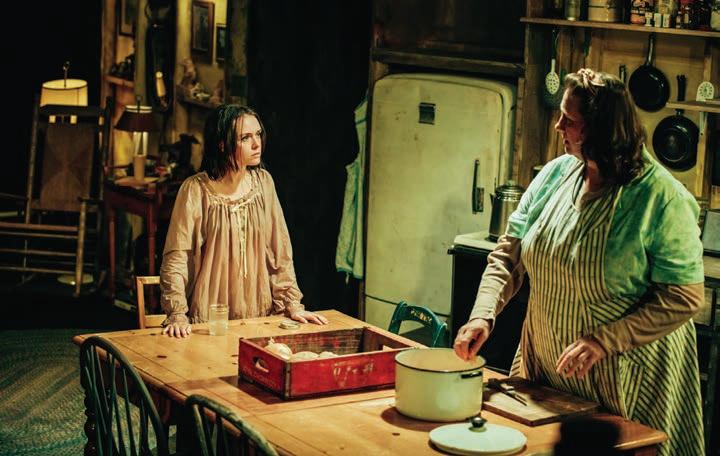 By CATEY SULLIVAN
By CATEY SULLIVAN
Onstage or -screen, the tropes of horror (teens in peril, demonic children, stormy nights, rusty saws, etc) have been exhausted for generations. What was once revolutionary is now mostly just revolting torture porn.
Enter Levi Holloway, whose Grey House shines like a beacon of hope for the genre, or if you will, like the eyes of 666 righteous girl children with flames in their pupils. TL/DR: Grey House is fucking terrifying. It is also feminist as fuck. The tropes are all there, but
deployed in ways that are deliciously shocking and, ultimately, meaningful.
Directed by Shade Murray, Grey House begins with a mountain car crash. Max (Sadieh Rifai) and Henry (Travis A. Knight) seek refuge in a cabin in the woods. They are obviously in love. Holloway is obviously aware of the
R
HOUSE
familiarity of their plight. As the couple looks around the desolate cabin, they joke that they’ve “seen this movie.” Haha. You think you know what is coming? Guess again, horror snobs. You. Have. No. Idea.
PM;
Theatre,
show
, aredorchidtheatre. org,
Wells,
Fri and Sat matinee, $ 40 Sat evening and Sun matinee.
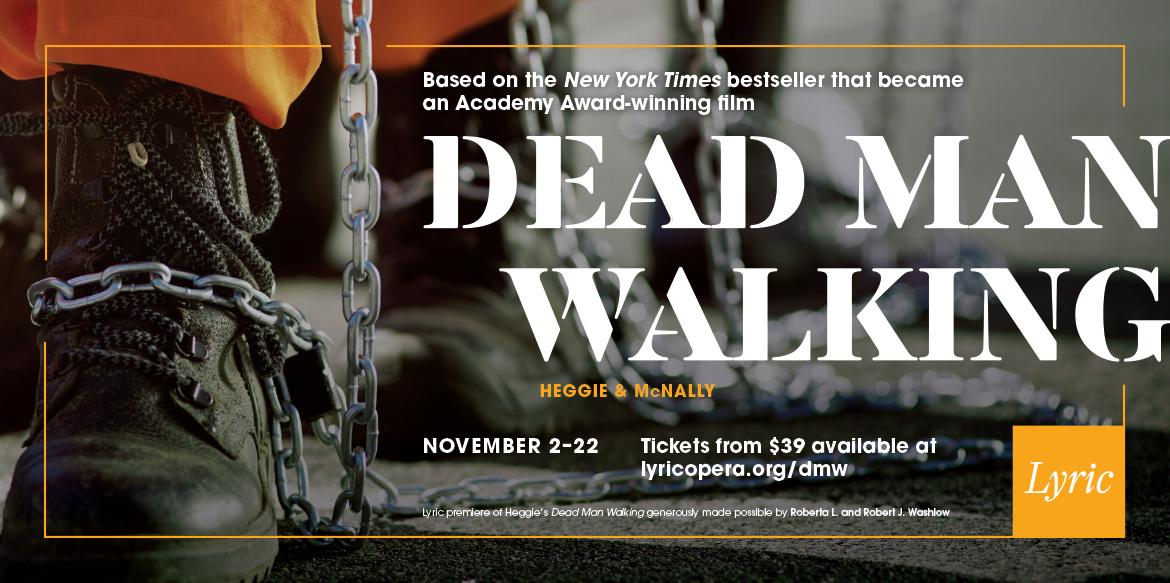
Thu,
That’s pretty much all one can say of the plot without wrecking it. Except maybe keep an eye on the window when Max and Henry first mention the deer they hit. It’s one of many moments that are little more than flickers, so subtle you might not be sure if it’s your imagination or reality at work. Things slither in cupboards, gleam from frosted glass, and scratch between walls. Sometimes, you’ll blink and something you’ve clearly seen—a carton of eggs, a white nightgown—is suddenly not what you’ve seen. It’s a glorious mindfuck. Yet this exquisite creepiness isn’t deployed simply for the sake of being creepy. Every moment plays into Holloway’s plot, which ends with a reveal that ties everything together with a big red bow. Made of veins and intestines.
OCTOBER 24, 2019 - CHICAGO READER 25
THEATER
FADEOUT FOTO
R READER RECOMMENDED b ALL AGES F
GREY
Through 12/1: Thu-Fri 7: 30 PM, Sat 3 and 7: 30 PM, Sun 3
no
Thu 11/28, A Red Orchid
1531 N.
312 943 8722
$ 30
$ 35
J
Which brings us to the hellishly fine cast. The cabin is home to Raleigh (the magnificent Kirsten Fitzgerald) and her children, Marlow (Sara Cartwright), A1656 (Haley Bolithon), Bernie (Kayla Casiano), Squirrel (Autumn Hlava), the Boy (Charlie Herman), and the Ancient (Dado). The last two don’t speak vocally. Bernie uses sign language, as does much of the cast. It is built into the voiced dialogue with a fluidity that adds layers of beauty and expressiveness to an already multitiered story. Also, it’s not a plot gimmick, a la Hush. Instead, it is simply as natural as breath. And death.
The family has plans for Henry and Max, plans that arrow back through centuries of atrocities perpetrated on women and girls before veering back to the play’s late-1970s setting. Would that it were a period piece. That it isn’t makes the plot all the scarier and the outcome all the more deviously satisfying. v
@CateySullivan
OPENING
R Love and other drugs
Two antidepressant test subjects wonder if their passion is real in The Effect

In Nick Hornby’s High Fidelity, Rob Fleming asks, “What came first—the music or the misery? Do all those records turn you into a melancholy person?” A similar quest for truth is the basis of The Effect by Lucy Prebble (a writer for the HBO series Succession), now in a Chicago premiere with Strawdog Theatre. Two long-term, sequestered test subjects wonder if their desire for each other is a result of real love or the antidepressants they are given. In a world increasingly dependent on drugs to control our feelings, Prebble explores both intense joy and clouded depression—as well as what defines sanity—through test subjects Tristan and Connie and their doctors, Toby and Lorna.
Prebble offers an interesting observation on depression: people view their successes as having external explanations but their failures as their fault.
Rather than staying mired in this topic, the story thankfully expands to look at gender and power dynamics, as well as the inherent human biases in scientific studies.
Sam Hubbard’s Tristan and Daniella Pereira’s Connie are delightfully bouncy and passionate, sucking the audience in as their relationship develops and erupts.
Their attraction weaves together like intricate sailors’ knots, thanks to the work of fight and intimacy coordi-
nator Tristin Hall.
Cary Shoda and Justine C. Turner as the doctors become more interesting in the second act, as their relationships with each other and their patients deepen. The pace of dialogue and acting doesn’t always serve the subtlety of the script. Yet director Elly Green’s cast and the production team have craed an important performance that leaves a lasting impression. —JOSH FLANDERS THE EFFECT Through 11/23: Thu-Sat 7:30 PM, Sun 4 PM; no performance Sun 11/17; Strawdog Theatre, 1802 W. Berenice, 773-644-1380, strawdog.org, $35, $26 seniors, halfprice rush and students.
R My old Kentucky hell
A family wedding opens old wounds for a prodigal daughter.
The homecoming prompted by weddings and funerals is a staple of American family dramas. But in Leah Nanako Winkler’s hands, old tropes burst open with startling insight and dollops of acidic wit. In 2015’s Kentucky, now in a local premiere at Gi Theatre (which has moved into more spacious digs at Theater Wit for this show), Hiro (Emjoy Gavino), the eldest daughter of foul-mouthed abusive lout James (Paul D’Addario) and lonely beaten-down Masako (Helen Joo Lee), goes home to Kentucky to try to talk her younger born-again sister, Sophie (Hannah Toriumi), out of marrying at age 22. She thinks she knows best, but every encounter

Hiro has in her old hometown reminds her of how little she actually understands about herself. Running away isn’t the same as getting away clean.
The familiar elements of awkward reunions line up: the old high school friends who don’t have much to say to each other (or lack the words to say it), the old high school crush who rekindles some passion and self-esteem in Hiro, the family that can’t remember what Hiro even does for a living. (She’s in marketing in New York, making “$60,000 a year!” as she keeps reminding them, though they still think she works as a barista.)
But Winkler, who was raised in Lexington and Kamakura, Japan, fills her script with poignant moments of truth. Nic (Emilie Modaff ), Hiro’s best friend from their teen years, reminds her that she’s always there for her, even when Hiro can’t be bothered to return a text. The family cat, Sylvie (Martel Manning), once Hiro’s source of solace, hisses disapproval. In fact, the only people who seem to have a handle on how to build a healthy life together are Sophie and the family she’s marrying into.
This is a strangely hopeful play about people who have largely given up on hope but haven’t fully given up on each other. As the two singers who serve as choral figures croon early on, “These people have shaped you. These people are horrible. These people are lovely. You are lovely and horrible.” Chika Ike’s carefully calibrated staging mostly finds the lovely horrible truths about this fractured but far from stereotypical family. —KERRY REID KENTUCKY Through 11/16: Thu-Sat 7:30 PM, Sun 2:30 PM, Theater Wit, 1229 W. Belmont, 773-975-8150, thegifttheatre.org, $42, $35 seniors, $25 students.

The quality of mercy is a big fat lie
In Invictus’s The Merchant of Venice, the rise of fascism sinks all hope.
With anti-Semitism on the rise in the U.S. and Europe, it might make perfect sense to revisit Shakespeare’s most nakedly anti-Semitic work. Yes, Shylock gets that “hath not a Jew eyes?” speech, but anyone who is moved by the suggestion that a Jewish man is human like everyone else is probably not a trustworthy ally to begin with. To say the least. Charles Askenaizer’s intimate staging of The Merchant of Venice for Invictus Theatre Company sets the story in 1938 Italy, the same
26 CHICAGO READER - OCTOBER 24, 2019 ll THEATER
Kentucky CLAIRE DEMOS
continued from 25
The Eff ect JESUS J. MONTERO.
THEATER
time frame as Vittorio De Sica’s 1970 film about the rise of Italian fascism, The Garden of the Finzi-Continis. But adding Mussolini’s blackshirts to the mix doesn’t enlarge our understanding of a play that only semi-works if it leans into the fact that all of the characters are pretty terrible people.
Yes, Joseph Beal’s Shylock has reason to hate Antonio (Chuck Munro), who opens the play by spitting in his face. Beal’s line readings seem strangled by his bile, while Antonio and his smug friends—including blackshirt Lorenzo (Travis Shanahan), who steals Shylock’s daughter, Jessica (Courtney Feiler), and his money—have all the swagger of the dominant classes. But both the pound of Antonio’s flesh that Shylock demands as forfeit on a loan and the conditions that Julia Badger’s Portia place on Shylock in return for his life (forced conversion to Christianity, for starters) are prompted by vengeance unleavened by any quality of mercy.
There are some smart performances here (including Martin Diaz-Valdes as a blissfully broish Bassanio). I’m just not convinced we have much le to learn from this particular play about how anti-Semitism functions. But Invictus at least provides us with a timely reminder that it’s never really gone out of fashion.

—KERRY REID THE MERCHANT OF VENICE Through 11/17: Thu-Sat 7:30 PM, Sun 3 PM, Mon 7:30 PM (no show 11/4), the Buena at Pride Arts Center, 4147 N. Broadway, invictustheatreco.com, $25.


Boulevard of broken dreams
Hollis Resnik shines as Norma Desmond, but Andrew Lloyd Webber’s score remains schlocky.
In a city whose theater scene is rooted in an “ensemble” aesthetic, it’s rare to see a local actor given above-thetitle billing, as is the case with Porchlight Music Theatre’s presentation of “Hollis Resnik in Sunset Boulevard.” But the marketing choice is apt in this case: it takes a local star of Resnik’s talent, skill, and cachet—honed and earned over almost 40 years of memorable performances—to artistically and commercially justify a revival of Andrew Lloyd Webber’s mediocre 1993 musicalization of Billy Wilder’s classic 1950 film noir.

Resnik is excellent as Norma Desmond, the hasbeen silent-movie goddess who hires out-of-work screenwriter Joe Gillis to pen her comeback vehicle—a Cecil B. DeMille biblical epic in which middle-aged Norma plans to star, absurdly, as a 16-year-old Salome. Resnik skillfully combines camp grandeur and human vulnerability as the unstable screen queen. Billy Rude is the callow, amoral Joe, who becomes Norma’s lover as well as her ghostwriter—an untenable relationship soured by Joe’s romance with studio script editor Betty Schaefer (Michelle Lauto). Larry Adams is superb as Norma’s devoted valet and chauffeur Max, an enigmatic man with secrets of his own.
Director Michael Weber’s production is bolstered by atmospheric visual design by Jeffrey D. Kmiec (sets), Maggie Fullilove-Nugent (lights), and Anthony Churchill (projections), evoking a fittingly macabre tone for the story’s gothic climax. Lloyd Webber’s schlocky score is set to a libretto by Don Black and Christopher Hampton, whose best lines are li ed straight from the original movie.
—ALBERT WILLIAMS SUNSET BOULEVARD
Through 11/24: Thu 7:30 PM, Fri 8 PM, Sat 3:30 and 8 PM, Sun 2 PM; also Thu 10/24 and 11/14, 1:30 PM, and Sun 11/24, 6 PM, Ruth Page Center for the Arts, 1016 N. Dearborn, 773-777-9884, porchlightmusictheatre. org, $51-$66. v



OCTOBER 24, 2019 - CHICAGO READER 27
Summoning the ghosts of Record Row
For two decades, a short stretch of Michigan Avenue hosted a concentration of creative entrepreneurship whose influence on Black popular music is still felt today.
 By AARON COHEN
By AARON COHEN
No doubt Chess did play a pivotal role in this history: its roster brought together youthful talent and virtuosic veterans in musical combinations that still command global audiences generations later. But a litany of other record labels lined these blocks, and some influenced soul music as much as Chess did. Record Row was also home to distributors that made Chicago a hub for the networks that carried these songs around the world. Some of the companies with outposts on the street, such as Cincinnati-based King Records, were established national operations; others were fly-by-night outfits.
Record Row also offered the kind of community that makes music happen, nurtured by a mix of driven individuals and mutually supportive collectives. Colleagues could woodshed ideas and sculpt them into hits. Songwriters congregated in a workshop sponsored by singer Jerry Butler, while musicians, producers, radio personalities, and managers hung out together at beloved diners. Widespread success and acclaim may have always been long shots, but almost everyone on Record Row felt they had little to lose by aiming high. Ironically, when Ebony magazine decried the lack of Black entrepreneurs in 1961, this street lined with small-scale businessmen and -women was also home to the o ce of its publisher.
You can take a walk down Michigan Avenue from Roosevelt Road to Cermak on the sunniest afternoon of the summer, but no matter how bright the light, it won’t illuminate the full history of the street. New condos, bars, and restaurants abound, but only a couple signs remain to hint at this neighborhood’s lasting impact as an incubator of Black popular music from the late 1950s through the early 1970s.
Back in those years, a different kind of energy flowed down the stretch of Michigan just south of the Loop. Though the street was dingier, some of its buildings—as well as more than a few of its inhabitants—surely overawed the young hopefuls who roamed its sidewalks. Once known as Record Row, this neighborhood indelibly shaped a wide range of Chicago’s diverse musical idioms—soul music especially thrived in this neighborhood. But with the exception of the heralded former site of Chess Records, near Michigan and 21st, this story is largely invisible.
Sixty years ago, real estate south of the South Loop wasn’t in hot demand the way it is today, so music-industry upstarts without much capital or credit could find room there— it’d been home to a string of car dealerships, earning it the nickname Motor Row, and a couple maps posted curbside detail this history. But the location proved ideal. It was a short drive, bus ride, or walk from where many Black singers and musicians lived, and several key radio stations weren’t far either. In particular, Chess-owned Black-oriented WVON was about five miles from Record Row.
MOVE ON UP: CHICAGO SOUL MUSIC AND BLACK CULTURAL POWER
Aaron Cohen will speak about Record Row as part of a discussion of his new book, Move On Up, published by University of Chicago Press.
Thu 10/24, 7 PM, Book Cellar, 4736 N. Lincoln, 773 293 2665, free, all ages
28 CHICAGO READER - OCTOBER 24, 2019 ll
Chess Records’ fi nal location, at 320 E. 21st, is now Chess Lo s. PAT NABONG FOR CHICAGO READER
The situation turned out to be too good to last, though. Some businesses folded because of their own blunders, while a changing landscape felled others. Distributors moved to the suburbs, and toward the end of the 1970s major labels consolidated their operations more fully on the east and west coasts. Those big companies abandoned the midwest, where many of their top artists developed their ideas, but Chicagoans shouldn’t neglect that history too.
Of course, exciting soul and R&B were being made elsewhere in Chicago as well—a flood of eager singers, talented musicians, would-be entrepreneurs, and more than a few hucksters churned out 45s throughout the city in the 1960s and ’70s. Curtis Mayfield’s Curtom Records set up shop at 8543 S. Stony Island in 1968 and later moved northwest to 5915 N. Lincoln. (Both buildings’ exteriors look the same now, which can’t be said of most sites on Record Row.) Some of Chicago’s best recording studios, including Universal Recording (46 E. Walton), were north of the Loop. But that said, few streets in America, let alone in Chicago, played host to a concentration of artistic talent and entrepreneurship as dense as that on the ten blocks of Michigan Avenue between Roosevelt and Cermak.
More o cial City of Chicago plaques commemorating these sites would help elevate Record Row’s legacy, especially because there’s so little left to see of the buildings themselves. But for the time being, the Reader has put together a brief tour that will help you recognize

the pieces of music history you may be passing by every day without knowing it. These eight locations deserve immediate attention:

Chess Records
2120 S. Michigan
Currently the site of Willie Dixon’s Blues Heaven Foundation, this is perhaps the preeminent address on Record Row. Chess called it home from 1956 to 1965, recording such great soul artists as Jackie Ross, Mitty Collier, and Fontella Bass. The building provided more than a studio where they could put their songs on wax: Collier, now a pastor, recalls that Chess songwriters took an interest in her life because they wanted to learn about teenagers for their lyrics. Raynard Miner, who wrote Bass’s hit “Rescue Me,” remembers the encouragement he got from such in-house musicians as bassist Louis Satterfield. Though Chess wasn’t always equitable about how it ran its business side, the music conceived under its roof remains universally loved.
Chess Records
320 E. 21st Chess moved here in 1966 and remained till its end in 1975. After General Recorded Tape bought the label in 1969, its business declined. This address hasn’t been exalted by a Rolling Stones song (“2120 South Michigan Avenue”), but Chess continued to release excellent records in the late 60s and early 70s, includ-
ing albums from Terry Callier ( Occasional Rain), the Dells (Freedom Means), and Rotary Connection ( Peace ). In-house arranger and producer Charles Stepney gave much of that music a sound far ahead of its time. The building has been converted to loft apartments, and Chess LP covers adorn the lobby walls.
Garmisa Distributing Company
1455 S. Michigan
Once the records were cut and pressed, they needed to be sent to retailers near and far, and distribution companies were key to this process. Of the dozens of operations on Record Row, M.S. Distributing was the biggest, but Garmisa likely had the most long-term influence. In the early 1960s it provided an entree into the business for teenage Ron Alexenburg,

who moved to New York in 1965 and later rose into the executive ranks at Columbia Records, where he signed such midwestern heroes as the Jacksons. He also fought against segregation in national media, which initially stymied Michael Jackson’s crossover dreams. “I used to have a statement: If you came from Chicago, you had an open door with me,” Alexenburg says. “This is my hometown.”
Vee-Jay Records and Brunswick Records
1449 S. Michigan
Vivian Carter and her husband, James Bracken, set up Vee-Jay in 1953. Over the next decade, this Black-owned label became one of the country’s premier record companies— even though segregation remained legal in most areas of American life. Its thriving
OCTOBER 24, 2019 - CHICAGO READER 29
The lobby of Chess Lo s at 320 E. 21st displays the covers of albums released by Chess Records, which occupied the building from 1966 till 1975. PAT NABONG FOR CHICAGO READER
Constellation Records was at 1421 S. Michigan, where nothing remains but a parking lot.
PAT NABONG
FOR CHICAGO READER
Leonard Chess holds a single from Chess imprint Cadet Concept at the label’s 320 E. 21st location in March 1968.
ST-40001688; CHICAGO SUN-TIMES COLLECTION; CHICAGO HISTORY MUSEUM.
©
SUN-TIMES MEDIA; LLC. ALL RIGHTS RESERVED.
J
from
roster included blues (Jimmy Reed), gospel (the Staple Singers, the Swan Silvertones), jazz (Wayne Shorter), and R&B (the Impressions, Betty Everett, Gene Chandler). In February 1963, Vee-Jay became the first U.S. label to release music by the Beatles.
Shirley Wahls recorded with Vee-Jay gospel group the Argo Singers as a young woman.
“Black people didn’t own things, as I saw it at that age,” she recalls. “They had restaurants, maybe a few grocery stores and clothing stores, but these were two humble people who had gotten lucky and had a recording company. You saw some of everybody while you were recording.” A series of mistakes and financial problems ended that luck, though, and the company filed for bankruptcy in 1966.
The demise of Vee-Jay didn’t mean that its former home at 1449 S. Michigan exited the history Chicago music making, however. Before the end of 1966, Brunswick Records had established an outpost here, and after influential producer Carl Davis rose to an executive position, a wave of classic soul records came out of these doors in the late 60s and early 70s.
The Chi-Lites, Barbara Acklin, Jackie Wilson, Tyrone Davis, and many others released hits under the Brunswick banner or on Davis’s own Dakar imprint. The label also hired musicians and arrangers such as Willie Henderson,
Thomas “Tom Tom” Washington, and Sonny Sanders to craft distinctive instrumental ensembles around these performers.
In the mid-70s a federal payola investigation embroiled Brunswick’s New York office in years of costly legal battles, but though the company was ultimately cleared, in its weakened state it didn’t survive the music industry’s early-80s downturn. The Brunswick name was revived in the mid-90s, and the label now exists largely as a reissue operation.
Constellation Records
1421 S. Michigan
After Vee-Jay Records fired president Ewart Abner (partly because of his gambling addiction), he set up shop at Constellation in 1963. Though it lasted just three years, the company had a big impact on the people involved. Gene Chandler joined the label’s roster, and after a few failed singles, in 1964 he recorded the Curtis Mayfield number “Just Be True,” which hit number 19 on the pop charts. As Chandler remembers it, Abner had bet him a steak dinner that the song would also tank—one bet that Abner was undoubtedly happy to lose. Still, the company folded two years later. Constellation producer Carl Davis went on to considerable success at Brunswick, and Abner rehabilitated his reputation in Detroit, where
he became an executive at Motown and managed Stevie Wonder.
One-derful Records
1827 S. Michigan
Alongside Vee-Jay, One-derful was one of the
Vee-Jay Records and later Brunswick Records occupied 1449 S. Michigan, which is now a mixed-use building on the market for $1.65 million.
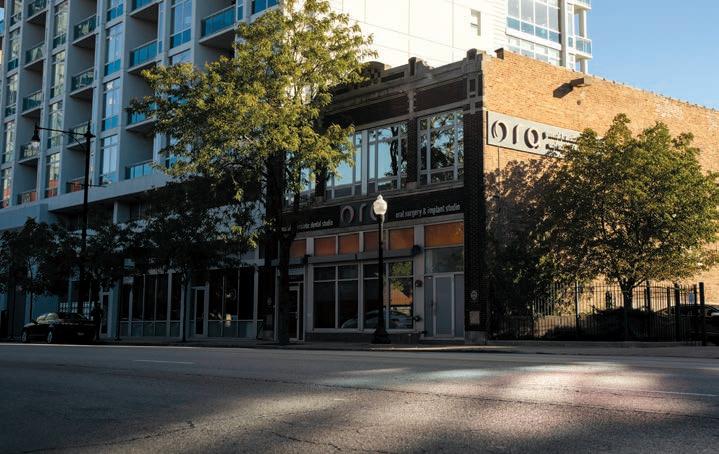
key Black-owned record companies on the strip. George Leaner and his brother Ernie ran the label, whose imprints included Mar-V-Lus and the gospel-focused Halo. Great Chicagoans such as Alvin Cash and Otis Clay recorded here, and the Five Du-Tones made “Shake a Tail Feather” a national R&B hit (though Ray Charles’s version in The Blues Brothers is better known). As Jake Austen reported for the Reader in 2009, in 1967 One-derful became the first company to record the Jackson 5. The label folded in 1968.
“George Leaner was like a father to me,” Clay said in an interview for Move On Up in 2012 (he passed away in 2016). “These are the kinds of guys we’re talking about as real characters in this business. They’re sorely missed now. If you could use the term ‘movers and shakers’—they knew everybody and would bug everybody until they got something done.”
Jerry Butler’s Songwriters Workshop
1402 S. Michigan
Soul singer Jerry Butler began his songwriters workshop out of personal necessity, but it swiftly grew into a fountain of creativity that issued a string of brilliant songs for a host of

30 CHICAGO READER - OCTOBER 24, 2019 ll
PAT NABONG FOR
CHICAGO READER
The former site of One-derful Records at 1827 S. Michigan is now home to a dental clinic.
PAT NABONG FOR
CHICAGO READER
continued
29
artists. Butler signed to Mercury Records in 1966, where he was backed by the songwriting and production team of Kenny Gamble and Leon Huff, but in 1970 they left the label to seek their own fortunes. Butler needed help, and fast, to fulfill his recording contract. Fortunately, Chicago had no shortage of talent, and songwriters gathered at 1402 S. Michigan to work on material not just for Butler but also for many others. The workshop provided the composers with the space and the salaries they needed to develop ideas, and also taught musicians about publishing and copyrights. Terry Callier and Larry Wade wrote songs for Callier’s own records as well as for the Dells, most famously 1971’s “The Love We Had (Stays on My Mind).” Chuck Jackson and Marvin Yancy teamed up to form the Independents (“Leaving Me,” 1973) before becoming heavyweight producers themselves, especially for
Yancy’s wife Natalie Cole. By 1976, the workshop had dissolved, but Butler believed it had more than served its purpose.
“Most of the participants in the workshop by that time had grown out of it and moved on,” Butler says. “Chicago had talent, and the workshop made it possible for those participants to go and set up their own production companies. And that’s what the workshop was designed to do—to develop producers and songwriters and to talk about the music behind the scenes.”
Mama Batt’s Restaurant
112 E. Cermak

Radio host Richard Steele has said that a defining characteristic of Chicago’s musical crews was that the artists and media personalities enjoyed hanging out together even if they

A condo building now stands at 112 E. Cermak, where Mama Batt’s Restaurant used to take up part of the ground fl oor of the long-gone New Michigan Hotel.
FOR CHICAGO READER
weren’t exactly teammates. As he tells it, competition was more amiable than cutthroat, and Mama Batt’s Restaurant, in the long-gone New Michigan Hotel, was where they would eat and hatch their plans. Marshall Chess, who ran the Cadet Concept imprint of the label run by his father, Leonard Chess, agrees—and adds that this spot was the heart of an environment that seemed at odds with the city as a whole, where sta from Black-owned labels would hang out with sta from white-owned labels even when the city was wracked by racist violence.
“I’d see the Vee-Jay people all the time at Batt’s Restaurant,” he says. “Everybody ate lunch there: Vee-Jay people, Chess people. It was friendly, everybody knew each other. Someone would have a session at Vee-Jay, walk down and work at Chess—a very loose, friendly atmosphere. It was a tough, segregated city, but Record Row was its own domain.”
@aaroncohenwords


OCTOBER 24, 2019 - CHICAGO READER 31
PAT NABONG
v
CURIOUS & ODD 843 W BELMONT at clark since 1976@thealleychicago open 7 days a week thealley.com 773-883-1800 SHOES LEATHER SILVER T-SHIRTS CLOTHING HALLOWEEN COSTUME ACCESSORIES
Recommended and notable shows and critics’ insights for the week
October
PICK OF THE WEEK Rhiannon Giddens honors the African and Arabic influences in American roots music
CLASSICALLY TRAINED VOCALIST and masterful banjo and fiddle player Rhiannon Giddens is celebrated as one of the leading proponents of what’s variously called Americana or roots music. Though her aesthetic has wide appeal, she toughens it with her uncompromising determination to bear witness to the ongoing (and too often neglected) Africanist voice and history in the Western “folk” and vernacular traditions. Giddens was cofounder of the Carolina Chocolate Drops, a contemporary string band whose deft musicianship and gift for updating traditional themes and ideas earned them a Grammy for the 2010 album Genuine Negro Jig (Nonesuch). Since releasing her first solo album, Tomorrow Is My Turn, in 2015, she has involved herself in a dizzying array of projects, many of which have focused bluntly on the historical and ongoing legacy of slavery in America. A 2017 recipient of the MacArthur “genius grant,” Giddens has continued to refine and expand her message; her most recent release, May’s There Is No Other, a collaboration with Italian multi-instrumentalist Francesco Turrisi, honors and demystifies the roles played by African and Arabic influences in what’s usually considered European or American musical culture. But don’t expect an exercise in folkie pedagogy: as she demonstrated in a duet with Tom Jones on “St. James Infirmary” (on Jools Holland’s 2015 New Year’s Eve BBC show), the heart of Giddens’s music is a rmation. The fearlessness of the ancestors whose lives she re-creates in her songs is manifest in the hard-won joy that permeates both her music and her onstage demeanor—even her daunting vocal technique and instrumental prowess are celebrations of life. —DAVID WHITEIS

32 CHICAGO READER - OCTOBER 24, 2019 ll
RHIANNON GIDDENS & FRANCESCO TURRISI Sat 10/26 and Sun 10/27, 8 PM, City Winery, 1200 W. Randolph, both shows sold out b
of
24 MUSIC
Rhiannon Giddens and collaborator Francesco Turrisi KAREN COX
b ALL AGES F 10/3010/3111/0311/0711/0811/0911/1011/1111/12-1 311/1511/16W.I.T.C.H. STARCRAWLER JAY SOM SONGHOY BLUES AYOKAY J.S. ONDARA HENHOUSE PROWLERS MARQUIS HILL NO MEN ANTHONY RAMOS 4TH AVE 11/1711/1911/2111/2211/2901/1501/1601/1701/1801/19SYML ROLE MODEL CHASTITY BELT LAS CAFETERAS KAMAAL WILLIAMS TOMORROW NEVER KNOWS CAROLINE POLACHEK GOTH BABE STELLA DONNELLY RESAVOIR DEEPER + CORRIDOR 10/2910/3010/3111/0111/0311/0411/0511/0611/0711/1011/11BRUTUS ABHI THE NOMAD THE HOOD INTERNET IYA TERRA AMY O BETCHA OPEN MIKE EAGLE KAYDEN GEOWULF DAVID WAX MUSEUM JOHNNY UTAH 11/1211/1411/1811/2011/2211/2301/1501/1601/1701/18BAILEY BRYAN THE COMMONHEART CLAUD BRISTON MARONEY LOWDOWN BRASS BAND SUB URBAN TOMORROW NEVER KNOWS TAYLOR MCFERRIN IDER MODERN NATURE HAND HABITS LINCOLN HALL 2424 N LINCOLN AVE SCHUBAS 3159 N SOUTHPORT AVE TICKETS AND INFO AT WWW.LH-ST.COM
THURSDAY24
J.S. Ondara Elise Davis opens. 7:30 PM, Lincoln Hall, 2424 N. Lincoln, $22. b




The first time Kenyan singer-songwriter J.S. Ondara heard the music of Bob Dylan, he was blown away. As a bow-tie-wearing, poetry-writing teenager, Ondara o en felt out of place among his peers, but listening to America’s most famous folk troubadour inspired him to set his own verses to music. In 2013, at age 20, Ondara won a U.S. green-card lottery and moved in with an aunt in Minneapolis, where he took up acoustic guitar (he chose the city in part because it’s located in Dylan’s home state of Minnesota). He refined his vocal technique in the solitude of midwestern winters, developing a potent, haunting tenor that occasionally flows into a falsetto. In February, Ondara released his debut full-length, Tales of America (Verve), which landed him a nomination for Emerging Act of the Year at the 2019 Americana Music Awards, and he’s now touring in support of the recent deluxe version, Tales of America: The Second Coming , which features five bonus tracks (including covers of David Bowie’s “I’m Afraid of Americans” and Neil Young’s “Heart of Gold”). Ondara’s songs speak of life’s contradictions and o en reflect his immigrant perspective. On the chorus of “God Bless America,” he contrasts his love of his adopted country with a sad awareness of its shortcomings: “Oh God bless America,” he sings, “This heartache of mine.”
 —CATALINA MARIA JOHNSON
—CATALINA MARIA JOHNSON
Chelsea WOlfe Ioanna Gika opens. 9 PM, Metro, 3730 N. Clark, $26. 18+
Listening to Chelsea Wolfe is like watching a fog roll in and wondering if a storm will follow; her music provokes an uncanny feeling that combines mystifying beauty and deep anxiety. The singersongwriter has spent much of the past few years on the road, touring in support of 2015’s Abyss and 2017’s Hiss Spun , both of which are heavily influenced by industrial rock and doom metal. Her
MUSIC
recent sixth studio album, Birth of Violence (Sargent House), has a calmer presence, but it’s no less unsettling. Wolfe wrote its material as she got acquainted with her new home in a remote, woodsy part of northern California. “There was a shi in me, and I felt connected to being a woman more physically and started exploring that more,” she said in an August interview with Consequence of Sound.
“It’s about navigating the world as a woman. . . . It’s about balancing that soft and strong energy.”
Throughout the album, the natural world provides metaphors for this duality, with Wolfe’s ecofeminist lyrics drawing connections between women and the earth. In “Erde” (“Earth” in German) Wolfe sings, “We cried together / Erde / Woman is the origin.”
The album ebbs and flows like a wave, building from ballads such as “American Darkness” into the climactic “Deranged for Rock & Roll” (the record’s most rock-oriented song), then pulling back to acoustic tracks that echo the airiness of 2012’s Unknown Rooms, and finally concluding in an ominous cloud of sampled thunder and rain (“The Storm”). The second half of the album can be a bit sleepy, but even when the songs blend together, Wolfe’s narrative lyricism keeps them engaging. On Birth of Violence she appears transformed into a lone, stoic figure— the type of woman who stands in the fog and beckons the storm.
—MADELINE HAPPOLD
FRIDAY25
Rhiannon Giddens & Francesco Turrisi See Pick of the Week, page 32. 8 PM, City Winery, 1200 W. Randolph, sold out. b
Omni Porno Glows and CB Radio Gorgeous open. 9 PM, Empty Bottle, 1035 N. Western, $14. 21+
As


have

Sub Pop debut
third
had
OCTOBER 24, 2019 - CHICAGO READER 33
Atlanta trio Omni
readied their
and
LP overall, Networker, I’ve
J.S. Ondara COURTESY THE ARTIST
J Come Fly with Me A Swingin’ Salute to Frank Sinatra featuring Jazz & Blues vocalist JENIFER FRENCH Saturday November 2 7 pm dinner 8:30pm-10:30pm showtime DREW’S ON HALSTED 3201 N Halsted Street, Chicago, IL 60622 WITH JAZZ TRIO Visit Jenifer French’s o cial website JennyLovesJazz.com Reservations at www. drewsonhalsted.com or 773-244-9191
Jeremy Kahn piano | Joe Policastro bass |Phil Gratteau drums
FEBRUARY28.....PETERCASANOVA
MARCH2............ICE

as much fun parsing the lineage of their sparse, anxiously playful postpunk as I’ve had listening to their catalog. Longtime Reader critic Peter Margasak has compared the band’s sound to the feverish early-80s output of Scottish indie label Postcard, while Atwood Magazine has suggested that Omni’s 2018 two-song single for Chunklet Industries bears similarities to Parquet Courts. Omni’s wiriest, most cutting guitar parts occasionally remind me of the unnerving, hyperfast punk of Minneapolis’s Uranium Club, or else sound like a distant cousin of the frenetic mutant styles that have recently emerged from northwest Indiana’s hardcore scene (occasionally and perfectly described as “Devocore”). Despite all these points of contact, though, Omni feel adrift in their own world—and despite the focused clarity of their distinctive minimalist approach, they’re always open to change. On “Underage,” which punches up a dour melody with light-footed piano, Omni make a startling midsong transition that’s anchored by a ribald guitar line— one of many moments that suggest they’re not working with a blueprint. —LEOR GALIL

UFO See also Saturday. 8 PM, Arcada Theatre, 105 E. Main, Saint Charles, sold out. b



Sometimes an anniversary celebration can also be the perfect time to end a chapter. Such is the case with strident UK rock band UFO, who turned 50 this year and are on the road with what they’ve claimed will be the last tour with their one constant member, gritty-voiced vocalist and front man Phil Mogg. Mogg has announced he’ll retire following this jaunt, and in an official statement he says he hopes folks don’t call this a farewell tour—though UFO have named it Last Orders. “Maybe the best word to use is ‘bittersweet,’” he suggests. The no-frills, uber-rocking band have always had a massive following in Chicago (they recorded the bulk of their 1979 live double LP Strangers in the Night at the International Amphitheatre, name-checking the Windy City on “Lights Out”), and the love seems to go both ways—UFO booked only ten U.S. dates on this tour, focusing on cities to which they feel a strong connection. The band started off as a psychedelic-leaning proposition in 1968, with Mick Bolton on guitar and woozy effects that could’ve caught Syd Barrett’s ear, and they pioneered a form of space boogie where tracks often needed more than 20 minutes to properly unfold. A er Bolton left in 1972, Larry Wallis (later of the Pink Fairies) and Bernie Marsden (later of Whitesnake) had brief tenures, but then Michael Schenker left the Scorpions to join UFO in 1973, cementing a new tougher sound for the band. This lineup influenced metalheads and hard rockers everywhere, with fistpumping, working- class anthems such as “Doctor Doctor,” “Too Hot to Handle,” and “Shoot Shoot” across a slew of hit albums, including 1975’s Force It and 1976’s No Heavy Petting. UFO were arguably never the same a er Schenker quit in 1978 to start his own Michael Schenker Group. And once bassist Pete Way le in 1982 (he started Fastway with “Fast” Eddie Clarke of Motörhead and the even more cleverly named band Waysted), UFO totally lost the plot and went so new wave. Countless musicians have been in and out of the band in the decades since,
including current guitarist Vinnie Moore, bassist Paul Grey (of the Damned and Eddie & the Hot Rods), and drummer Simon Wright (of AC/DC and Dio). Luckily original drummer Andy Parker is back aboard, but sadly longtime guitarist, keyboardist, and vocalist Paul Raymond died in April, so for this tour he’ll be replaced by 80s member Neil Carter. Judging by recent set lists, UFO are focusing on their golden mid-70s period, so don’t miss your chance to see Mogg do his thing one last time. He’s subtly hinted that the current band might carry on without him, but that would be a much different affair—potentially like the unfortunate versions of Thin Lizzy without Phil Lynott and Creedence Clearwater Revival without John Fogerty. —STEVE KRAKOW

Young Thug Machine Gun Kelly, Polo G, and Strick open. 8 PM, Credit Union 1 Arena at UIC, 525 S. Racine, $28-$81. b
Young Thug doesn’t need to prove himself to anyone anymore. In the early 2010s he emerged from the hotbed of Atlanta, the city that’s largely set hip-hop’s tone this decade, and his every heart-wrenching warble and hair-raising screech seemed to add speed to his ascent. His fl uid fl ow has inspired some of Atlanta’s latest rising rappers, some of whom have released music through his YSL Records label—and three of whom, Gunna, Lil Baby, and Lil Keed, appear on Thug’s latest fulllength, August’s So Much Fun (300/Atlantic). They mostly get lost in the noise, though, because Thug
34 CHICAGO READER - OCTOBER 24, 2019 ll
continued from 33 MUSIC 1800 W. DIVISION (773)486-9862 EVERYTUESDAY (EXCEPT2ND) AT 8PM OPENMICHOSTEDBYJIMIJONAMERICA Comeenjoyoneof Chicago’sfinestbeergardens! JANUARY11..................FLABBYHOFFMANSHOW8PM JANUARY12..................AMERICANDRAFT JANUARY13..................DJSKIDLICIOUS JANUARY14.................. TONYDO ROSARIOGROUP JANUARY17.................. JAMIE WAGNER&FRIENDS JANUARY18..................MIKEFELTON JANUARY19..................SITUATION DAVID MAXLIELLIAMANNA JANUARY20..................FIRST WARDPROBLEMS JANUARY21.................. TONYDO ROSARIOGROUP JANUARY22..................RCBIG BAND7PM JANUARY24..................PETERCASONOVA QUARTET JANUARY25..................THEWICK JANUARY26..................THEHEPKATS SKIPPIN’ ROCK JANUARY27..................THESTRAY BOLTS JANUARY28..................WHOLESOMERADIODJNIGHT Est.1954 Celebratingover toChicago! 61yearsofservice FEBRUARY23.....MIKEFELTEN FEBRUARY24..... DARK ROOMMEN WHITEWOLFSONICPRINCESS MOJO49 FEBRUARY25.....WHOLESOMERADIODJNIGHT FEBRUARY26.....RCBIG BAND7PM
QUARTET8PM MARCH1............SMILIN’ BOBBYANDTHECLEMTONES
BOXANDBIGHOUSE MARCH3............CHIDITARODAND TARRINGTON10PM MARCH7............ JAMIE WAGNER&FRIENDS SEPTEMBER20..... DAVIDQUINN SEPTEMBER21.....WAGNER&MORSE SEPTEMBER22.....THE DYNAMOS SEPTEMBER23....WHOLESOMERADIODJNIGHT MURPHYTHOMPSON9:30PM MIKEFELTEN THERONANDRACHELSHOW SEPTEMBER24.....RCBIGBAND7PM BIRDGANGS9:30PM TITTYCITTY DUDESAME SEPTEMBER26.....PETERCASANOVAQUARTET SEPTEMBER27.....DORIAN TAJ SEPTEMBER28..... TOURS BULLYPULPIT SEPTEMBER29.....SOMEBODY’SSINS FEATURINGJOELANASA SEPTEMBER30.....OFFTHEVINE4:30PM NUCLEARJAZZQUARKTET7:30PM Est.1954 Celebratingover 65yearsofservice toChicago! EVERYTUESDAY (EXCEPT2ND) AT 8PM OPENMICHOSTEDBYJIMIJONAMERICA OCTOBER 24 THOMAS A MATECKI BAND OCTOBER 25 CRACKPOT RED WIGGLERS OCTOBER 26 ZESTIVAL OCTOBER 27 WHOLESOMERADIO DJ NIGHT OCTOBER 28 RC BIG BAND 7PM OCTOBER 30 AMERICAN TROUBADOUR NIGHT OCTOBER 31 PHYLLIS’ MUSICAL HALLOWEEN ALL-STAR REVUE NOVEMBER 1 THE JETSTAR 88S NOVEMBER 3 TALITY NOVEMBER 4 PROSPECT FOUR 9:30PM NOVEMBER 6 MORSE & WAGNER 6PM NOVEMBER 7 SMILIN’ BOBBY AND THE CLEMTONES NOVEMBER 9 RONNIE AND THE NASTYS MCCARTY NOVEMBER 10 HEISENBERG UNCERTAINTY PLAYERS 7PM NOVEMBER 11 RC BIG BAND 7PM PROSPECT FOUR 9:30PM NOVEMBER 12 FLABBY HOFFMAN SHOW 8PM NOVEMBER 13 ELIZABETH’S CRAZY LITTLE THING FEATURING MARK JOURDAN 9PM NOVEMBER 14 FLABBY HOFFMAN SHOW 8PM NOVEMBER 15 MOPERY OPEN MIC ON TUESDAY EVENINGS (EXCEPT 2ND)
recruited more than a dozen guest artists for the album—and their performances largely demonstrate what a peerless force he remains. And while Juice Wrld and Lil Uzi Vert seem more likely than Thug to shape hip-hop’s future, their guest spots prove that neither is immune to his charms. On “What’s the Move,” Uzi seems happy to play the role of assistant, ceding much of the track to the star of the show. When Thug switches from half-singing in a deep, sensual quaver to rapping tightly wound verses in a high-pitched yawp, his turn-on-a-dime dexterity makes him sound freakishly alien, even as he conveys ordinary human vulnerability. It’s no wonder he has some of rap’s biggest young stars under his spell. —LEOR GALIL
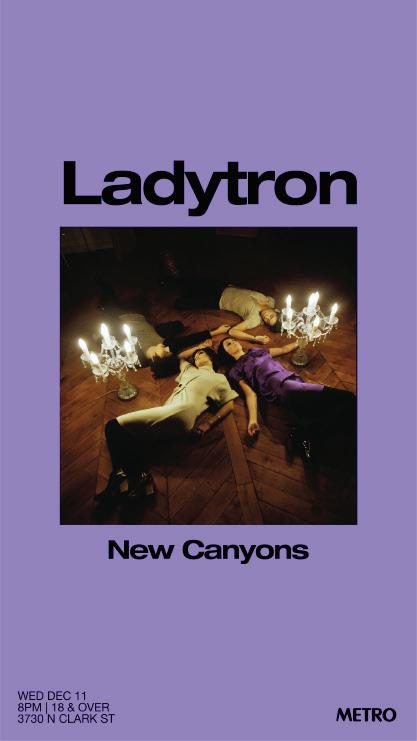


SATURDAY26
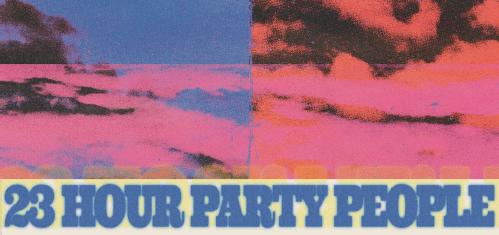
MUSIC

As DJ Roc, Chicago producer Clarence Johnson helped mold footwork and provided the support it needed to become an international underground phenomenon. He started making juke tracks in the early 2000s, but just a few years later he adopted the faster, battle-ready footwork sound. Johnson strengthened the footwork scene in 2005 by cofounding production collective Bosses of the Circle, which soon expanded to include future experimental star Jlin. He became a force in those years, during which Chicago house hero DJ Sluggo released several of Johnson’s CDs. Footwork dance battles accompanied the finale of the Bud Billiken Parade, and CAN TV program Wala Cam , which documented the scene, expanded to YouTube. When UK label Planet Mu got interested in releasing footwork, Johnson was among the first artists it tapped. His sole album for the label, 2010’s The Crack Capone , preceded even Planet Mu’s watershed Bangs & Works compilation, which bolstered footwork’s international reputation and his-
torical legacy. Johnson also contributed two cuts to Bangs & Works, which Pitchfork recently ranked 129th on its “best albums of the 2010s” list. Lately Johnson has aligned himself with DJ Clent’s Beatdown House, which is putting out the sequel to his 2018 album, Roctober. On Roctober Vol. 2 (for which this show is a release party), he sometimes reshapes his volatile, hammering bass till it’s smooth and sensual—he understands how to push footwork’s unpredictable, ever-evolving aesthetic in idiosyncratic directions without damaging its integrity.
—LEOR GALIL
Rhiannon Giddens & Francesco Turrisi See Pick of the Week, page 32. 8 PM, City Winery, 1200 W. Randolph, sold out. b

SABATOn Hammerfall opens. 8 PM, the Vic, 3145 N. Sheffield, sold out. b
Sabaton are celebrating their 20th year of existence in style. The Swedish power-metal band kicked off 2019 with the launch of their own YouTube channel, which focuses on the history that fuels their songwriting, and in July they released their ninth album, the World War I-inspired The Great War . Sabaton are no stranger to exploring such landmark events through their music; previous records have focused on World War II (2010’s Coat of Arms), the rise and fall of the Swedish empire (2012’s Carolus Rex), and noteworthy final stands throughout military history (2016’s The Last Stand). However, translating the horrors of WWI (which in recent decades hasn’t o en received the same type of propagandist spins as WWII) into the triumphant riffs and soaring solos that typically define power metal is a tricky task, and Sabaton don’t always quite nail it. “The Attack of the Dead Men” recounts the victorious but doomed charge of Russian troops gassed by Germans in 1915 while defending Osowiec Fortress, but the band’s sanitized version of the story skimps on the gory details (the cocktail of gas used by the Germans essentially liquefied the flesh of the Russian J
OCTOBER 24, 2019 - CHICAGO READER 35
Find more music listings at chicagoreader.com/soundboard
DJ Roc DJ Kese and Beatdown House Sound open. 3 PM, Astronaut Flee Dance Studio, 211 E. 79th, $5. b
Young Thug CONNOR RATHBONE SMARTBARCHICAGO.COM 3730 N CLARK ST | 21+ 3730 N. CLARK ST METROCHICAGO.COM METROCHICAGO@ TICKETS AVAILABLE VIA METRO + SMARTBAR WEBSITES + METRO BOX OFFICE. NO SERVICE FEES AT BOX OFFICE! ON SALE FRIDAY! ON SALE FRIDAY! DEVIN TOWNSEND EMPATH VOL. 1 TOUR THE CONTORTIONIST HAKEN SAT MAR 14 JAMES MURPHY (EXTENDED SET) ANTHONY ROTHER / DANNY DAZE + MUCH MORE!11.02 SONS OF THE SILENT AGE PERFORMING “ZIGGY STARDUST ” & “STATION TO STATION” SAT JAN 11 ON SALE NOW! LADYTRON NEW CANYONS WED DEC 11
troops), focusing on heroism rather than on desperation, futility, and tragedy. Still, Sabaton know their way around a riff and a rousing chorus: “A Ghost in the Trenches,” their ode to famed Canadian sniper and First Nations activist Francis Pegahmagabow, gallops with joyously acrobatic guitar work and drops in a surprise key change to great effect. The band clearly love military history, and to their credit, they o en highlight obscure aspects of the campaigns they cover. If you can look past the cognitive dissonance of guitar solos and “Aces High”-style riffage in a song about the Battle of Verdun, there’s a lot to love on The Great War. —ED BLAIR
UFO See Friday. 8 PM, Arcada Theatre, 105 E. Main, Saint Charles, sold out. b




SUNDAY27

Jonathan Bree Shilpa Ray and Andrew Sa open. 9 PM, Sleeping Village, 3734 W. Belmont, $15. 21+

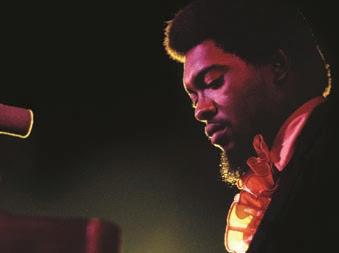



When New Zealand singer-songwriter Jonathan Bree began his solo career in 2013, his creations were almost diametrically opposed to the poppy,

upbeat material that he’d cra ed in the Brunettes, his longtime project with Heather Mansfield. His first two LPs were melancholy and dour, casting his deep, gloomy, discontented croon in a dark light.


But on his 2018 breakthrough and third LP, Sleepwalking (Lil’ Chief), Bree gives his chamber pop a brighter, dreamier, and more intoxicating tone, with
nods to 1960s lounge, mod, and French pop. Bree wrote Sleepwalking , like its predecessors, in the confines of his home studio, crafting songs with virtual instruments before musicians brought the arrangements to life. Its aesthetic maintains a beautiful and haunting dichotomy of light and dark, with airy melodies underpinned by romantic yearning as

much as disillusionment and cynicism. On “Valentine,” Bree juxtaposes spiteful lyrics about an exlover with glistening bells and jangly guitar: “Don’t need no precious valentine / Or hear you will be mine all mine / Just want to know you / And hear you’re cheerless too.” That track and several others feature guest vocals from Crystal Choi, Clara Viñals, and Princess Chelsea, which creates a playful male-female dynamic and helps channel the sort of passion and anguish that can come with being in love. Bree and his band, along with accompanying dancers, perform in the creepy, mannequinesque spandex face masks and mop-top wigs that have appeared on his album covers and music videos. It’s a moody and surreal experience. —SCOTT MORROW
Rhiannon Giddens & Francesco


Turrisi See Pick of the Week, page 32. 8 PM, City Winery, 1200 W. Randolph, sold out. b





TUESDAY29
Brutus Coyote Man opens. 9 PM, Schubas, 3159 N. Southport, $15.
There are few things less cool than a singing drummer. Drummers already have it bad enough; they’re
36 CHICAGO READER - OCTOBER 24, 2019 ll
18+
MUSIC Find more music listings at chicagoreader.com/soundboard continued from 35 1200 W RANDOLPH ST, CHICAGO, IL 60607 | 312.733.WINELIVE MUSIC IN URBAN WINE COUNTRY novnov Booker T. Jones nov nov 3514 William DuVall of alice in chains SUCH DON’T MISS... UPCOMING SHOWS 10.27 Chicago Philharmonic Fall Series: Queens of Jazz 10.29 Mike Phillips WITH MARQUEAL JORDAN 11.3 Ed Lover’s Jokes & Jam Brunch 11.4 Mark Allen Felton 11.17 Story Jam Brunch FEAT. PETER SAGAL, DAVID PASQUESI, ANTOINE MCKAY, TRACY BAIM & PATTI VASQUEZ 11.18 Corey Smith 11.19 Christine Lavin, John Gorka, Patty Larkin & Cliff Eberhardt 11.20 kris allen 11.22+23 heather mcdonald 10.30-11.1 JOHN HIATT 11.7 EDWIN MCCAIN 11.8 TERISA GRIFFIN 11.10 THE FLATLANDERS 11.12 THE MOODY BLUES’ JOHN LODGE 11.13 MARC COHN 11.16 WATCH WHAT CRAPPENS 11.21 DON MCLEAN 11.24 CHICAGO PHILHARMONIC BRUNCH SERIES 11.24 ENTER THE HAGGIS 11.25 CHERIE CURRIE & BRIE DARLING WITH WHITE MYSTERY 11.26-27 DIGABLE PLANETS 11.29 DWELE 11.30-12.1 BODEANS 12.3 WHINE DOWN WITH JANA KRAMER 12.4 JANE MONHEIT 12.8-10 LOS LOBOS 12.11 DAN RODRIGUEZ 12.13 RODRIGUEZ 12.15 JANE LYNCH - SWINGIN’ LITTLE CHRISTMAS 17 Jimmy Webb with robin spielberg Brutus GEERT BRAEKERS
typically pushed into the background, the last member of a band to get any attention or credit. The only people who really care about them are other drummers, and then only on occasion. I’m a drummer myself, so I get it. And when drummers add lead vocals from behind the kit, they somehow seem even dorkier.
Drummer-singer Stephanie Mannaerts of Belgian posthardcore trio Brutus is not only an exception to this rule, she turns the whole premise upside down. She’s a total ripper on the kit, and her voice is dynamic, beautiful, and haunting. Her stage presence is a mesmerizing, magnetic mix of fury, skill, and showmanship that commands complete attention—which is saying a lot, considering what powerhouses her bandmates are. Brutus play intense, airy posthardcore; Stijn Vanhoegaerden’s tremolo-style guitar walks the line between atmospheric postrock and chilling black metal, while Peter Mulders’s growling bass holds down the songs’ gnarly-yet-catchy rhythms. The band’s second album, the brand-new Nest (released in America via Sargent House), is an unstoppable force from start to finish, piling unnerving melody and spooky ambience atop their complex, crushing take on punk and hardcore. Tonight’s show is Brutus’s Chicago debut, and it’s not to be missed.
—LUCA CIMARUSTI












Jpegmafia Butch Dawson opens. 8 PM, Bottom Lounge, 1375 W. Lake, sold out. 17+


On his new third studio album, All My Heroes Are Cornballs, Brooklyn-born, Baltimore-based hip-hop artist Barrington Devaughn Hendricks, aka JPEGmafia (Peggy for short), offers an escape from the monotony of music that’s restricted by genre. Hendricks dives headfirst into his attention-deficit-

fueled opener, “Jesus Forgive Me, I Am a Thot,” which is the album’s most concise answer to the question “What kind of music does JPEGmafia make?” (either despite or because of the fact that it doesn’t stick to any specific sound for long). Its core beat centers a simple, dreamy piano progression that would sound more at home in a smooth R&B ballad than in the song’s spasmodic layering of rattling 808s, claps, vocal harmonies, percussion, and occasional television static. Hendricks’s uncanny ability to weave in and out of contrasting vocal styles elevates the two-and-a-half-minute intro into an embodiment of his artistry; he switches from calmly rapping “Feels like I’m shootin’ / I’m shi ing time / Dressed in your grandmama’s handme-downs” to shouting “Sucka, I’m prominent, I was anonymous / I been in front of you every time” with the aggression of a punk-rock front man. The eclectic nature of Hendricks’s music is emblematic of a life that’s equally kaleidoscopic: after spending much of his adolescence in Alabama, he joined the air force, putting in a tour of duty in Iraq and spending time stationed in Germany, Japan, and other locales. He also earned a master’s degree in journalism. As he told the Fader, “I just wanted to write about music if I’m not going to make it.” Hendricks’s visual presentation is as vital as his music, and not just because his thri -store couture makes his comedic brag about “your grandmama’s handme-downs” double as a plausible claim. Onstage he carries the same frenetic energy he flexes on wax, o en busting out impromptu freestyles, stage dives, and erratic dance moves. He’s brought that spirit to Chicago several times—so far this year he’s played at Pitchfork Midwinter and the Pitchfork Music Festival, where he acted as his own DJ—but this Bottom Lounge show is his first headlining set in the city. —MATT HARVEY v



























OCTOBER 24, 2019 - CHICAGO READER 37
MUSIC JPEGmafi a ALEC MARCHANT TICKETS ON SALE NOW: chicagomagiclounge.com | 312-366-4500 signature show the THE CHICAGO MAGIC LOUNGE PROUDLY PRESENTS OCTOBER 31 ST THROUGH NOVEMBER 2 ND
EARLY WARNINGS
Miniature Tigers 2/5/20, 7:30 PM, Lincoln Hall b Modern Nature, Hannah Cohen, Toth 1/17/20, 8 PM, Schubas, part of Tomorrow Never Knows festival; on sale Fri 10/25, 10 AM, 18+ N0v3l 1/17/20, 9 PM, Sleeping Village, part of Tomorrow Never Knows festival; on sale Fri 10/25, 10 AM
Meshell Ndegeocello 3/18/20, 7 and 9:30 PM, SPACE, Evanston b
Peter Bjorn and John, Methyl Ethel (solo) 4/4/20, 8:30 PM, Empty Bottle
Caroline Polachek 1/15/20, 9 PM, Lincoln Hall, part of Tomorrow Never Knows festival; on sale Fri 10/25, 10 AM, 18+
b ALL AGES F
Never miss a show again. Sign up for the newsletter at chicagoreader. com/early
While She Sleeps, He Is Legend, Savage Hands 3/2/20, 5:30 PM, Bottom Lounge b Wire 3/4/20, 8 PM, Metro, on sale Fri 10/25, 10 AM, 18+ Cory Wong, Scott Mulvahill 2/1/20, 8:30 PM, Thalia Hall, 17+
You Are Here with Derrick Carter, Shmoo 11/6, 10 PM, Spy Bar
GOSSIP WOLF
A furry ear to the ground of the local music scene
Little Dragon ELLEN EDMAR
NEW
10,000 Maniacs 2/13-2/14/20, 8 PM; 2/15/20, 5 and 8 PM, City Winery b
11th Annual Chili Cook Off to benefit Arts of Life featuring Pulaski Squares 11/2, 5 PM, Arts of Life b
John Acquaviva, Jonathan Coe, Hiroko Yamamura 11/15, 10 PM, Spy Bar
Antenes & Erika, BMG, Bill Spencer 11/15, 10 PM, Smart Bar
Ardalan, Inphinity, DJ Striz 12/27, 10 PM, Spy Bar
Astro Boogie, Zombie Manana 11/2, 8 PM, Bourbon on Division
Autopsy, Cianide, Professor Black, Molder 3/7/20, 7 PM, Reggies’ Rock Club, 17+
Max Bemis, Perma, Museum Mouth 11/3, 7 PM, Chop Shop, 18+
Boris (DJ), Dustin Sheridan, Inphinity 11/16, 10 PM, Spy Bar
BrownMark, Bad Boys of Paisley, JD’s Revenge 11/22, 9 PM, Martyrs’
Chicago Asian American Jazz Festival night one with Yoko Noge & Jazz Me Blues Band 11/1, 9 PM, Elastic b
Chicago Asian American Jazz Festival night two with Trio WAZ (Ed Wilkerson Jr./
Tatsu Aoki/Michael Zerang), Purple Gums (Bobby Bradford/Francis Wong/William Roper) 11/2, 9 PM, Elastic b
Circa Survive 5/11/20, 6:30 PM, Concord Music Hall, 17+
Colony House, Tyson Motsenbocker 3/15/20, 7:30 PM, Lincoln Hall b
Shawn Colvin 5/22-5/23/20, 8 PM, SPACE, Evanston b
Dead Space, Illyus, Barrientos, Intermodal 11/29, 10 PM,
Spy Bar
Deeper, Corridor 1/19/20, 9 PM, Lincoln Hall, part of Tomorrow Never Knows festival; on sale Fri 10/25, 10 AM, 18+
Dirty Nil 11/23, 8 PM, Cobra Lounge, 17+
Stella Donnelly, Ophelias 1/17/20, 9 PM, Lincoln Hall, part of Tomorrow Never Knows festival; on sale Fri 10/25, 10 AM, 18+
Dr. Dog, Michael Nau 2/52/6/20, 9 PM, Thalia Hall, 17+

Dreamboat improv show featuring Artemis Singers 11/1, 8 PM, iO Theater
Dreamcatcher 12/8, 7 PM, Concord Music Hall b Dubfire, Jason Patrick 11/22, 10 PM, Spy Bar
Brett Eldredge 12/20-12/21, 8 PM, Chicago Theatre b
Brent Faiyaz, Grip 5/1/20, 9 PM, Concord Music Hall, 17+
Gene Farris, Offaiah, Karsten Sollors 11/1, 10 PM, Spy Bar
Fisher 12/27, 9 PM, Aragon Ballroom, 18+
Lee Foss and friends 11/27, 10 PM, Spy Bar
Furr, St. Marlboro 11/10, 8:30 PM, Empty Bottle
Kenny Glasgow 12/6, 10 PM, Spy Bar
Eliot Glazer’s Haunting Renditions 1/15/20, 9 PM, Sleeping Village, part of Tomorrow Never Knows festival; on sale Fri 10/25, 10 AM
Goth Babe, Jude Shuma 1/16/20, 9 PM, Lincoln Hall, part of Tomorrow Never Knows festival; on sale Fri 10/25, 10 AM, 18+
Hallowol at with the Hu, Doomriders, Lightning Born 10/31, 7 PM, House of Vans, RSVP required, 18+ F
Hand Habits, Garcia Peoples 1/18/20, 8 PM, Schubas, part
of Tomorrow Never Knows festival; on sale Fri 10/25, 10 AM, 18+
Harmaleighs, Emily Blue 11/1, 9:30 PM, Hideout
Health&Beauty, J.R. Bohannon 11/18, 8:30 PM, Empty Bottle
F
Zach Heckendorf 1/23/20, 8 PM, SPACE, Evanston, on sale Fri 10/25, 10 AM b
Hemispheres, Tamarie T. & the Elektra Kumpany, Doum Sound 11/21, 8 PM, Martyrs’ Ider, Allday, Boy Bjorn 1/16/20, 8 PM, Schubas, part of Tomorrow Never Knows festival; on sale Fri 10/25, 10 AM, 18+
Infamous Stringdusters, Horseshoes & Hand Grenades 2/7/20, 8 PM, the Vic, on sale Fri 10/25, 10 AM, 18+ J. Worra, Chris Diaz, Ekho 11/8, 10 PM, Spy Bar
June of 44, Poison Arrows 1/25/20, 9 PM, Bottom Lounge, 17+
Jungle Giants 2/13/20, 9 PM, Lincoln Hall, 18+
Kung Fu, Ben Miller Band 12/14, 9 PM, Martyrs’
Lala Lala, Nnamdi, Sen Morimoto 1/16/20, 9 PM, Sleeping Village, part of Tomorrow Never Knows festival; on sale Fri 10/25, 10 AM
Liquid Soul 2/7/20, 10 PM, SPACE, Evanston b Little Dragon 4/28/20, 8 PM, the Vic, 18+ Ed Maverick 11/29, 8 PM, Schubas b Michael Mayer, Merrick Brown 11/29, 10 PM, Smart Bar
Mayor Daley, Justindemus 10/31, 9 PM, Hideout Taylor McFerrin 1/15/20, 8 PM, Schubas, part of Tomorrow Never Knows festival; on sale Fri 10/25, 10 AM, 18+
Meduza, Apollo XO, Inphinity 11/23, 10 PM, Spy Bar
Porky, Sonya Alvarez, Doubleklutch, Imjustinbraun, Alex Kislov b2b Arvii Mala 11/21, 10 PM, Spy Bar Prok & Fitch, Inphinity, Tsunami 11/30, 10 PM, Spy Bar Tomeka Reid Quartet 11/4, 8:30 PM, Constellation, 18+ Resavoir, Valebol, Luke Titus 1/18/20, 9 PM, Lincoln Hall, part of Tomorrow Never Knows festival; on sale Fri 10/25, 10 AM, 18+
Rinzen, RJ Pickens, Bruce Jaxon, Slippin Jimmy 11/14, 10 PM, Spy Bar Matthew J. Rolin, Mute Duo, Phish DJ Set (Eli Winter/Ara Hanissian II) 11/1, 8 PM, Outer Sound b Mihalis Safras, KC Wray, Inphinity 11/9, 10 PM, Spy Bar Saint Motel 2/27/20, 7:30 PM, the Vic, 18+
Sango, Savon 2/18/20, 7 PM, Bottom Lounge, 17+ Santé, Rafa Ramirez, Inphinity 11/2, 10 PM, Spy Bar
Seventeen 1/12/20, 7:30 PM, United Center, on sale Fri 10/25, 4 PM b
Silverstein, Four Year Strong, I the Mighty 4/7/20, 6 PM, Concord Music Hall, 17+ Southside Johnny & the Asbury Jukes 5/8-5/9/20, 8 PM, City Winery b
Space Jesus, Minnesota, Huxley Anne 12/31, 8:30 PM, Riviera Theatre, 18+ Spy Bar Halloween with Art Department, Nick Bassett 10/31, 10 PM, Spy Bar
Kasim Sulton’s Utopia 3/11/20, 8 PM, City Winery b
Terrapin Flyer 1/17-1/18/20, 9 PM, Martyrs’
Tonina, Loona Dae 11/1, 9 PM, Hungry Brain
Devin Townsend, Contortionist, Haken 3/14/20, 8 PM, Metro, on sale Fri 10/25, 10 AM, 18+
Vivian Girls, Young Guv, Brica-Brac DJs 11/2, 8:30 PM, Empty Bottle Wax Motif 11/22, 10 PM, SoundBar
UPDATED
BoDeans 11/30, 7 and 10 PM; 12/1, 7 PM; 12/29, 7 PM, City Winery, both 11/30 shows & 12/1 show sold out; 12/29 show added (on sale Fri 10/25, noon) b
Heilung 1/20/20, 7:30 PM, Riviera Theatre, moved to Riviera; tickets purchased for the Vic will be honored; new on sale Fri 10/25, 10 AM b Whitney 12/4-12/8, 8:30 PM, Thalia Hall, 12/4 added; 12/512/8 are sold out, 17+
UPCOMING
Blimes & Gab, Dave B 11/1, 8 PM, Beat Kitchen, 17+ Gramps the Vamp, Nitehost, Ovef Ow (as the Bee-52s) 10/31, 9 PM, the Owl F Conan Gray, Umi 11/1, 8 PM, House of Blues b Terisa Griffin 11/8, 8 PM, City Winery b Chris Ligon CD Release and Variety Show with Flat Five, Sharon Rutledge, and more 11/8, 8 PM, FitzGerald’s, Berwyn Little Boots 11/7, 8 PM, Sleeping Village
Loud Luxury 11/8, 6 PM, Concord Music Hall b Lsdream, Shlump 11/8, 9 PM, Bottom Lounge, 18+ Minibeast 11/8, 9 PM, Empty Bottle
Switchback 11/2, 8:30 PM, FitzGerald’s, Berwyn Thank You Scientist, Bent Knee, Tea Club 11/10, 7:30 PM, Beat Kitchen, 17+ This Will Destroy You, Christopher Tignor 11/19, 9 PM, Sleeping Village
Trigger Hippy 11/15, 8 PM, Beat Kitchen
Matt Ulery's Delicate Charms record release 11/1, 9 PM; 11/2, 8 PM, Green Mill
Jozef Van Wissem 11/26, 8:30 PM, Empty Bottle v
AFTER 11 YEARS in business, Not Normal Tapes has become synonymous with Chicago and Northwestern Indiana hardcore and punk (and more recently hip-hop). Reader writers have covered many of NNT’s blistering releases, including tapes from Gas Rag and CB Radio Gorgeous, as well as the label’s expertly curated events, including the Infestational fest in 2016 and its awesome anniversary shows. Last week, founder Ralph Rivera announced in a heartfelt entry on NNT’s blog that the label will wind down over the next year and close in October 2020, but not before a final burst of activity: “We’ve got about eight releases le in us,” says Rivera, “ending with the same hyperlocalized focus that we kicked off on.” Congrats, Not Normal! You’ll leave a mighty legacy!
It’s been three years since acid-fried grunge punks Rabble Rabble called it a day, but guitarist Matt Ciarleglio tells Gossip Wolf that the Rabbles will “get the band back together—just for the night— to play some freaky songs” at the Empty Bottle on Monday, October 28. The free show is a benefit for Chicago nonprofit Resilience , which advocates for survivors of sexual violence, and the Bottle will donate $3 per attendee (as well as accepting donations at the door). The lineup also features the Sueves, Peel, Vamos, and DJ sets from Absolutely Not.
Chicago producer Uncle El has been making hip-hop beats since the late 90s: he began rapping as a student at Roger C. Sullivan High School, then started producing tracks so he and his friends would have something to rap over. He’s now a major player in Chicago’s beat scene, helping present two regular showcases for experimental, hip-hop-influenced electronic music: Open Beats and Push Beats . And on Thursday, October 24, he plays a free release party at Emporium in Wicker Park to support his new album on ETC Records, Now U C Me? Sam000 (aka Sam Trump), Radius, and Sev Seveer open.
—J.R. NELSON AND LEOR GALIL
Got a tip? Tweet @Gossip_Wolf or e-mail gossipwolf@chicagoreader.com.

38 CHICAGO READER - OCTOBER 24, 2019 ll
CHICAGO SHOWS YOU SHOULD KNOW ABOUT IN THE WEEKS TO COME
WOLF BY KEITH HERZIK










OCTOBER 24, 2019 - CHICAGO READER 39 JUST ADDED • ON SALE THIS FRIDAY! 1/25 Mipso 3/13 & 3/14 The Tallest Man on Earth: Spring 2020 Tour with special guest Courtney Marie Andrews FOR TICKETS, VISIT OLDTOWNSCHOOL.ORG 11/1 Global Dance Party: Iré Elese Abure with Orisha Dance Chicago 11/10 Alasdair Fraser & Natalie Haas 10/30 Giovanni Seneca & Andreas Kapsalis 11/6 The Bongo Hop ACROSS THE STREET IN SZOLD HALL 4545 N LINCOLN AVENUE, CHICAGO IL WORLD MUSIC WEDNESDAY SERIES FREE WEEKLY CONCERTS, LINCOLN SQUARE OLDTOWNSCHOOL.ORG 4544 N LINCOLN AVENUE, CHICAGO IL OLDTOWNSCHOOL.ORG • 773.728.6000 THURSDAY, OCTOBER 24 8PM Pokey LaFarge with special guest Joel Paterson FRIDAY, OCTOBER 25 8PM Tom Paxton & The DonJuans SATURDAY, OCTOBER 26 10AM, MAURER HALL SUNDAY, OCTOBER 27 10AM, ARMITAGE HALL Spooky Singalong Family show • Costumes welcome! SUNDAY, OCTOBER 27 7PM Loudon Wainwright III: Surviving Twin FRIDAY, NOVEMBER 1 9:30PM Rachael & Vilray presented by Old Town School of Folk Music and SPACE SUNDAY, NOVEMBER 3 7:30PM Badi and Clarice Assad In Szold Hall FREE screening of the movie “Badi” at 4pm FRIDAY, NOVEMBER 8 8PM Flaco Jiménez with Los TexManiacs plus special guest Dwayne Verheyden SATURDAY, NOVEMBER 9 8PM The Ike Reilly Assassination with special guests TJ Jagodowski & Dave Pasquesi ® ® BUY TICKETS AT Saturday, November 9 Park West Saturday, January 25 Park West On Sale This Friday at 10am! was unprepared for the holidays ADAM COROLLA April 28 • Vic Theatre On Sale This Friday at 10am!
OPINION
SAVAGE LOVE
School for sexual scoundrels How can inveterate cheaters find happiness? Facing up to facts is a start.
By DAN SAVAGE
Q : I am a guy in my 40s, handsome, more financially successful than most, and a classic sexual scoundrel. I cheated on my ex-wife and every girlfriend I’ve ever had. I’m currently dating a woman in her 20s. We are both each other’s ideal type. She has as scandalous a past as I do but has “accomplished” more in a shorter time. We met via a hookup app. Then another one. And another one.
We enjoyed each other’s company from the moment we met, and the sex was great. (We share a few noteasy-to-match kinks.) Most of her stuff is now at my house. We’ve had many deep dives into our respective pasts. We cringe now at how we met and why we’ve hooked up with so many random people. Here’s the issue: A er 12 months together, with too many breakups to count, we have no idea how to move forward. We cannot establish trust. We are in love and everything’s great . . . so long as we have our eyeballs on each other. Once out of direct sight, we
both turn into possessive assholes. So many phones have been stolen and thrown away, I can’t count. How do two sluts find peace? —CAN’T PART OVER SEX
A : You’ve cheated on everyone you’ve ever been with, and your girlfriend has presumably cheated on everyone she’s ever been with. (That’s what you meant by “she has as scandalous a past as I do,” right?) But instead of embracing the cheats and sluts you both know yourselves to be and thanking your fucky stars for bringing you together, CPOS, you felt obligated to disavow your past behaviors— some of which sound legitimately terrible—and slut-shame yourselves and each other. And for what? You are still the people you were before you started theatrically cringing about how you met.
She doesn’t trust you not to cheat on her, and I don’t see why she should. You don’t trust her not to cheat on you, and I don’t see why you should. So why promise not to cheat? Why waste
time and emotional energy policing each other for evidence of what you both know to be true: You’re going to cheat on each other. That you can trust in. So instead of making promises you can’t keep and then having meltdowns and stealing each other’s phones and breaking up and getting back together, CPOS, make a promise you can keep. Not to be faithful but to be considerate. And discreet. Promise not to do anything that makes her feel like she isn’t your top priority even if you do fuck around occasionally, and ask her to make the same promise to you. Then you can move forward as honest sluts and not lying cheats.
Q : I am in love with a happily married woman. I was the “other man” almost 20 years ago, before she was married but when she was living with the man she’s with now. We fell madly in love, but we didn’t end up together. In the intervening years, we both married and had children. We’ve reconnected a couple times over the years and it became a sexual
relationship again. Here’s the tricky part: My thenwife was an undocumented immigrant. My marriage was unhappy, but for my child’s sake I couldn’t leave my wife, for fear of his mother getting deported. This year, she got her green card and we divorced. Then I reconnected with my ex again. We desperately want to get married, but she is scared to end her marriage. She’s in a relatively happy marriage, and divorce will be a bombshell. She worries about the shock and destabilizing effect on her children, who are still young. And she fears that nothing short of admitting she’s in love with someone else could end her otherwise happy marriage, but admitting that she’s been unfaithful will make co-parenting impossibly hard going forward. We agonize over this situation but can’t bear the thought of not being together. We understand that pain will have to happen, but we just don’t know what the best course of action is. —PENSIVE AND INCREDIBLY NERVOUS
stepfather, at some point in the very near future. The whole truth, all at once. Don’t draw it out. Inflicting pain on the installment plan won’t assuage your guilt.
impasse. Is it even possible to find a compromise? —SEX ALACRITY DIMINISHED
pleaserecycle
A : If you two can’t wait until her kids are a little older before you marry, PAIN, then there’s no way to avoid the most painful possible version of this shit show. But your girlfriend’s husband deserves the whole truth right out of the gate, even at the risk of complicating their co-parenting arrangements in the short run. Letting her soon-to-be-ex-husband twist in the wind wondering why his decent, loving, seemingly stable marriage suddenly collapsed would just be cruel—and pointlessly so, as he will inevitably learn the truth. You two don’t plan to marry in secret, right? Which means her soon-tobe-ex and their kids are going to find out about you, the new husband and
Q : I’m married to a loving, handsome man. For the first several years of our relationship, we had amazing sex. At some point a er moving in together, my interest in having sex with him decreased significantly. This has been a pattern in every long-term relationship I’ve ever had. Living together seems to diminish my attraction to my partner, which is hugely problematic when I am in a long-term monogamous relationship. The second problem is that my kink needs are not being met. My husband is aware of my kinks and is GGG in theory, but he lacks the skill to deliver what I’m interested in. Before I met my husband, I spent many years as a member of a very active kink scene in a big city. I miss the friendships and experiences I had when I was able to share my kinks. Unfortunately, in addition to living in a place without access to these kinds of events and workshops, my husband is monogamous without compromise. He is unwilling to co-top me alongside another Dominant partner and unwilling to let me bottom for others solo regardless of whether sex is involved. Within the past several years, this frustration has led me to seek out the occasional experience with others, which is always discovered. My sex drive seems intact when I fantasize about hot, rough scenes with other people, but I experience very little desire for my husband. I’m at a loss. I adore this man, and haven’t ever felt like it would be worth it to leave him just so I could get my kinky needs met, but we are at an
A : Knowing what you do about yourself—your attraction to a partner craters a er moving in together, you have a powerful need to explore your kinks with casual play partners—you shouldn’t be cohabitating and/or making monogamous commitments. But you are and you have, SAD, so what now? There’s no middle ground between an uncompromisingly monogamous marriage and the kind of freedom to explore your kinks that you need to feel fulfilled, partnered or not. But your husband caught you fucking around—or kinking around— and has presumably forgiven you, seeing as you aren’t e-mailing during your divorce proceedings. So perhaps if given a choice between letting you and losing you, SAD, he would let you. And who knows? If all your longterm relationships have been monogamous, and they all resulted in the end of rough and adventurous sex with new partners, well, perhaps that’s what is cratering your desire for committed partners—the limitation, not the cohabitation. And who knows? If you were free to fuck around with other people—if your husband didn’t symbolize the end of sexy adventures—maybe you’d still want to fuck him. But if he does give you the freedom to fuck around and you still don’t want to fuck him, SAD, do your husband a favor and leave him. And then no more monogamy or cohabitation for you, got it? v
Send letters to mail@ savagelove.net. Download the Savage Lovecast every Tuesday at savagelovecast. com.
@fakedansavage
40 CHICAGO READER - OCTOBER 24, 2019 ll
thispaper






















OCTOBER 24, 2019 - CHICAGO READER 41 Music, Art 24 7 lumpenradio.com coprosperity.org Shows, Events WLPN LP 105.5 FM ON AIR Half-Price Theatre Tickets Stretch your dollars. Ignite your soul. Chicago’s best theatre deals: HOTTIX.ORG From joy to heartache and every feeling in between, Chicago theatre provides exhilarating experiences that make audiences come alive. Book your next show today! powered by
SEASONAL STORE ASSOCIATES
CLASSIFIEDS
JOBS GENERAL CAREGIVER/ HOUSEKEEPER URGENTLY NEEDEDIt is a part time job, liveout position from Tuesday to Friday. The position includes childcare and little housekeeping Must be able to interact with children Speak English, and non smoker MUST HAVE REFERENCES You can reach Mrs Claudia at Claudiapredacoop1960@ gmail.com (10/31)
resume or inquiries to: WCICleaning@SBCGlobal. net” (11/14)
REAL ESTATE RENTALS
SEARCHING
JOBS ADMINISTRATIVE SALES & MARKETING FOOD & DRINK SPAS & SALONS BIKE JOBS GENERAL REAL ESTATE RENTALS FOR SALE NON-RESIDENTIAL ROOMATES MARKETPLACE GOODS SERVICES HEALTH & WELLNESS INSTRUCTION MUSIC & ARTS NOTICES MESSAGES LEGAL NOTICES ADULT SERVICES

MANUFACTURING PROCESS ENG - Power Plant Services in Melrose Park, IL seeks qualified Mfg Process Eng. Collaborate w/ eng teams & mfg facilities to develop processes & equipment to support product mfg & new product launches. Masters or foreign equiv degree in Mech Eng, Mfg Eng or in closely rltd fld of study (Will accept a Bachelors in above flds + 5 yrs of prog exp in lieu of Masters) each alt edu req w/ at least 1 yr of pro exp in: (i) Utilizing SolidWorks AutoCAD & Mastercam to design, develop & model CNC machinery, products & mfg processes; (ii) performing root cause investigations, FMEAs & implementing CAPAs to improve mfg processes; & (iii) gathering, maintaining, formatting, compiling & manipulating tech data, incl customer design drawings, specs, materials test results & eng design changes. Emp will accept any suitable combo of edu, training, or exp. An EOE. 40 hrs/wk. Respond by mail: Power Plant Services, Attn: Carolina Avila, 3131 W. Soffel Ave., Melrose Park, IL 60160. Refer to ad code: PPS-0719. (10/24)
Medline Industries, Inc. has multi openings in its Northfield, IL office for: A) IS-Developer Analysts III to des’n & implmnt sol’ns for web commerce; B) K2 Developers to create/maintain Bus Proc automt’n sol’ns; C) Systems Analysts & Developers III to work w/BI team to define/ document/apply BI rules to entrprise data. No trvl; no telcomm. Also seeking a Supply Chain Manager (Shanghai) to lead Shanghai proc. imprvmt w/focus on report’g/sys supp. This job reqs 10% int’l trvl; no telecom. Mail Resumes to: ATTN: HR, Medline Industries, Three Lakes Drive, Northfield, IL 60093 (10/24)

Sr. Software Engineer, .Net Development (Lisle, IL)(Mult pos). Archtct, devlp & maintn technl prcsses arnd .Net pltfrm assets. Partcipt in app dvlp incld desgn, dvlp & QA SDLC. Req. Mster’s deg or for equiv in Comp Sci, IT, or rel fld, & 2 yrs exp in job offrd or rel pos dvlp’g large, distrbtd, & hgh prodctn impct systs in AGILE/ SCRUM environ. Must’ve relvt work exp. Apply res/ cvr let to Evolent Health LLC, Attn: M. Terceros, Ref#: LJ2019, 800 N. Glebe Rd, Ste 500, Arlington, VA 22203. No calls. (10/24)


WANTED Experienced[at least 5 years] CLEANING SUPERVISOR FOR UNION ASSIGNMENT [SEIU Local 1{$18-$22 per hour}] IN CHICAGO[60617]. Send

I am a quiet senior citizen seeking a safe and secure sleeping room in the near Northside of Chicago. I will be there between the hours of 10 pm and 8 am. 312-774-4742. If no answer, please leave your name and number. (10/24)
STUDIO
Large studio apartment near Loyola Park. 1337 W. Estes. Hardwood floors. Cats OK. Heat Included. Laundry in building. Available 11/1. $850-880 month. Sublease from 11/1/19 through 3/31/20 available for $765/ month. (773)761-4318. www.lakefrontmgt.com (10/24)
1 BEDROOM
One bedroom apartment near Warren Park and Metra. 6802 N. Wolcott. Hardwood floors. Laundry in building. $995-1050/month. Heat included. Cats OK. Available 11/1. (773)7614318. www.lakefrontmgt. com (10/24)
Large one bedroom apartment near Loyola Park. 1335 W. Estes. Hardwood floors. Cats OK. Laundry in building. $995/ month. Heat included. Available 11/1. (773)7614318. www.lakefrontmgt. com (10/24)
Large one bedroom apartment near Morse red line. 6824 N. Wayne. Hardwood floor. Pets OK. Heat included. Laundry in building. Available 11/1. $1025/month. (773)7614318. www.lakefrontmgt. com (10/24)
2 BEDROOM Spacious 2 BR/2 BA condo across from Millennium Park. Remodeled, parking, pool, and balcony with lake views. Laundry/dry cleaners in building. Option for furnished or unfurnished. MUST SELL BEST OFFER. Assigned agent. (312)852-1150 (10/24)
4 BEDROOM Bucktown: 1922 N Wilmot, 4 RMS, 2BR, 1 Blk from “Blue Line L”. Modern kitchen & bath. Hardwood floors. $1200 + security . Available Immediately. No Pets. Call (773) 612-3112 (10/24)
FOR SALE
Private,Private waterfront home with sand beaches on Lake Michigan. View pictures at www. newkewauneerealestate. com$374,000.00 N.E.W. Real Estate,Inc Kewaunee,wi 920 388 1004

Applications being accepted for Affordable Housing. East Lake Management Group, Inc.: Lawndale Terrace/Plaza Court Apartments, 3158 W. Roosevelt Rd., 773-8262133. Please bring a valid ID and apply in person (Mon. – Fri.) from 9am to 4pm between Fri., Nov. 1, 2019 and Mon., Dec. 2, 2019. Cozy 1-Bdrm units available at Lawndale Terrace for Senior Citizens (62 & older) and persons with disabilities (55 & older). Spacious 3-Bdrm units available at Lawndale Terrace/ Plaza Court Townhome MultiFamily Housing. Both buildings offer access to internet/cable hook-up & off-street parking. Heating, air-conditioning & appliances are included. Conveniently located near public transportation, shopping & parks. Lawndale Terrace / Plaza Court sit about 6 miles west of the Loop, nestled between I-290, Douglas Park, Roosevelt Rd and Ogden Ave.

MARKETPLACE
GENERAL SERVICES
Miracle Message. Obtain health, energy and joy. Prolong your youth and life. Decrease illness with the possibility of healing. Call Jolanta: (847)6508989. 5237 W. Addison St. Chicago, IL 60641 (11/07)
PERSONALS
52 year old incarcerated
Black/Italian male seeks sincere, down to earth and genuinely open-minded people (like myself) to correspond with. All welcome, I can’t wait to share my story and learn about yours.
Peter Saunders #B–00118 2600 N. Brinton Avenue Dixon, Illinois 61021


(312)
FOR SALE
100,650 miles. 2-door coup. Black engine 4cylinder used 2000 Toyota Solara. FWD. Cruise Control. Air conditioning. Power steering. Power window. AM/FM and one CD player. 2 owners. call (312) 532-1497 (10/24)
LEGAL NOTICES
STATE OF ILLINOIS,
NOTICE OF COURT DATE FOR REQUEST FOR NAME CHANGE. Location Cook County - County Division
with details
42 CHICAGO READER - OCTOBER 24, 2019 ll
PUBLICATION
WANT TO ADD A LISTING TO OUR CLASSIFIEDS? E-mail ydominguez@chicagoreader.com
or call
392-2970 BINNY’S IS HIRING! Binny’s Beverage Depot is the Midwest’s largest upscale retailer of fine wines, spirits, beers and cigars, and due to our continued growth, we are now looking for: PARTTIME,
We are seeking energetic, customer-oriented individuals to perform a variety of store functions. Qualified persons must be over 21 years of age, able to lift 40-50 lbs. and available to work flexible hours. Previous retail experience a plus, with cashier or stock experience preferred. Candidates must be able to work nights & weekends. We are now looking for dedicated individuals to join our team at the following locations: Lincoln Park • Skokie River Grove • Lincolnwood Lakeview • Grand • Evanston South Loop • Evergreen Park Hyde Park • Niles Please apply online at www.binnys.com/careers Retail EOE
12/16/2019, 1:30 PM
Courtroom #1202 Case # 2019CONC001197 (10/24)
Financing Statement

Number: 1045091000048
01/18/2019
OF MINNESOTA Office of the Minnesota Secretary of State Shelly-Linette:Goss
The North 39.36 feet of Lot 22 in Block 3 in Cryer’s State Street Addition, a subdivision of the North West 1/4 of the North East 1/4 of Section 12, Township 36 North, Range 14 East of the Third Principal Meridian, in Cook County, Illinois.
Commonly known as: 309 Luella, Calumet City, Illinois P.I.N. 29-12-201-037 (10/31)










Notice is
NOTICE OF SERVICE BY PUBLICATION
Cooper’s Hawk Opening on Oak St. in the Gold Coast!

Job Fair October 17 & 18 from 9am-5pm ALL POSITIONS


Host | Server | Houseworker Runner & More




Hiring Site:
John Hancock Building , 13th Floor
Unable to attend?
Apply daily on the
floor or at chicago.applyat.chEOE

Psychic Readings Palm and Tarot


OCTOBER 24 2019 - CHICAGO READER 43 - Case Type: Name Change from Anas Elshafei to Adam Anas Elshafei Court Date
in
UCC FINANCING STATEMENT AMENDMENT ADDENDUM Initial
File
DATE
STATE
31st
IN THE UNITED STATES DISTRICT COURT FOR THE NORTHERN DISTRICT OF ILLINOIS EASTERN DIVISION
given to you, MONIQUE HOBBS, Defendant, in the matter of Hicks v. American Imaging Management, Inc. et al. that this cause has been commenced against you in this United States District Court for the Northern District of Illinois, Eastern Division asking for your response to the Veri ed Complaint. Case No. 1:19-cv-2975. MICOLE HICKS, Plainti , v. AMERICAN IMAGING MANAGEMENT, INC d/b/a AIM Specialty Health; MONIQUE HOBBS, individually ) ) ) ) ) ) ) ) Case No.: 1:19-cv-2975 Judge: Rebecca R. Pallmeyer Respectfully Submitted, JOLIANNE S. ALEXANDER (f/k/a Walters) One of Plainti ’s Attorneys Jolianne S. Alexander (f/k/a Walters) (6314222) Mirabella, Kincaid, Frederick & Mirabella, LLC Attorney for MICOLE HICKS 1737 S. Naperville Rd. Suite 100 Wheaton, Illinois 60189 (630) 665-7300 Phone (630) 665-7609 Fax jolianne@mkfmlaw.com By: /s/ Jolianne S. Alexander FINANCING AVAILABLE Licensed, Bonded & Insured—IL Roofing Lic. #104.013526 For 40 years, 30,000+ satisfied customers have trusted Second City. • ROOFING • BRICKWORK • GARAGES SHINGLE ROOFS NEW GARAGESFLAT ROOFS BIG “O” MOVERS Spring & Summer Sale Call For FREE Estimate (773) 487-9900 Now Hiring!Drivers & Experienced Movers (773) 487-9900 ROOFING, GUTTERS & MORE the platformThe Chicago Reader Guide to Business and Professional Services www.herreralandscapeschicago.com DISCOVER YOUR BLISS www.intimate-bliss.com *WARNING: Must be 18 years or older to visit website and/or place order. To advertise, call 312-392-2970 or email ads@chicagoreader.com SAVE BIG ON A NEW HVAC SYSTEM FINANCING AVAILABLE CREDIT CARS ACCEPTED Up to $2,500 savings for a limited time! Call today for a free estimate! 773-895-2797 | www.MironHVAC.com -Energy Efficient -Innovative comfort features -Great maintenance contracts -24-Hr Emergency Service Travel Your Way 708-391-9009 This could be you!
If you are worried, troubled, sick or unhappy through love, business, marriage, luck or whatever your problem may be, I have reunited the separated, healed the sick and help many people with money problems. Where others have failed. I have succeeded. I will not ask what you came in for. I will tell you. I will call your friends and enemies by name (773)-540-5037 1222 E 47th St She guarantees to help you. No problem is too big for her Find hundreds of Readerrecommended restaurants, exclusive video features, and sign up for weekly news at chicagoreader.com/ food. pleaserecyclethispaper
























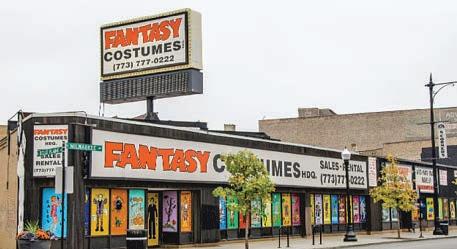





CALL773-777-0222 OpenAll YearRound 4065 N. Milwaukee Ave.,Chicago,IL60641 Over50 Years FAN TASY COCO ST U M EM S. 20-75%OFF SelectItemsthroughoutthestore LARGEST SelectionofWigs,Makeup,Masks, Costumes(adult&kids),AdultRentals&Accessories OneFullCityBlockLong Chicago’sOne-StopCostumeShopfor over50 Years OPENNON-STOP,24HOURS BeginningThursday10/24 - 10/3 1
 By SALEM COLLO-JULIN
By SALEM COLLO-JULIN












































 By MAYA DUKMASOVA
MAYA DUKMASOVA FOR CHICAGO READER
By MAYA DUKMASOVA
MAYA DUKMASOVA FOR CHICAGO READER


















 By IRENE HSIAO
By IRENE HSIAO



 By LAURA MOLZAHN
By LAURA MOLZAHN


















































 By CATEY SULLIVAN
By CATEY SULLIVAN











 By AARON COHEN
By AARON COHEN














 —CATALINA MARIA JOHNSON
—CATALINA MARIA JOHNSON




































































































































